Introduction
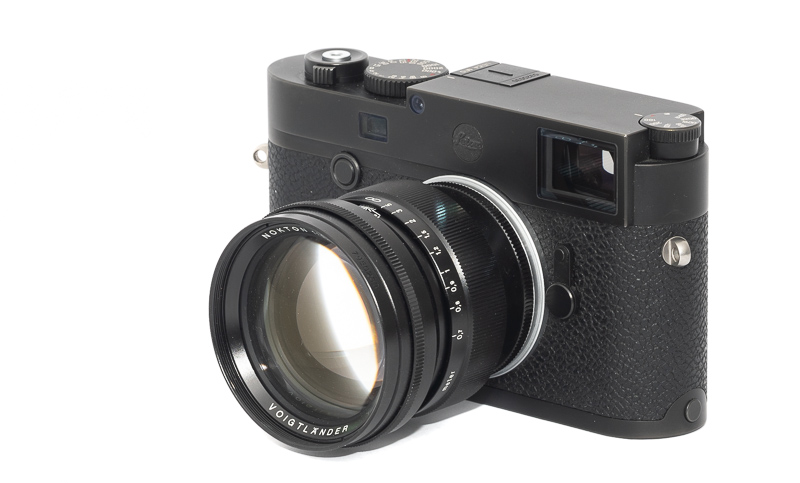
Over the years Cosina has become really good at designing compact yet fast lenses and the Voigtländer VM 75mm 1.5 Nokton might be the epitome of that, as it offers a huge entrance pupil (= a lot of bokeh) for its size and weight. Let’s find out more about this intriguing lens together.
This lens will be reviewed on the 42mp Sony A7rII and the 24mp Leica M10.
Update 06/24: complete update of the review
Sample Images

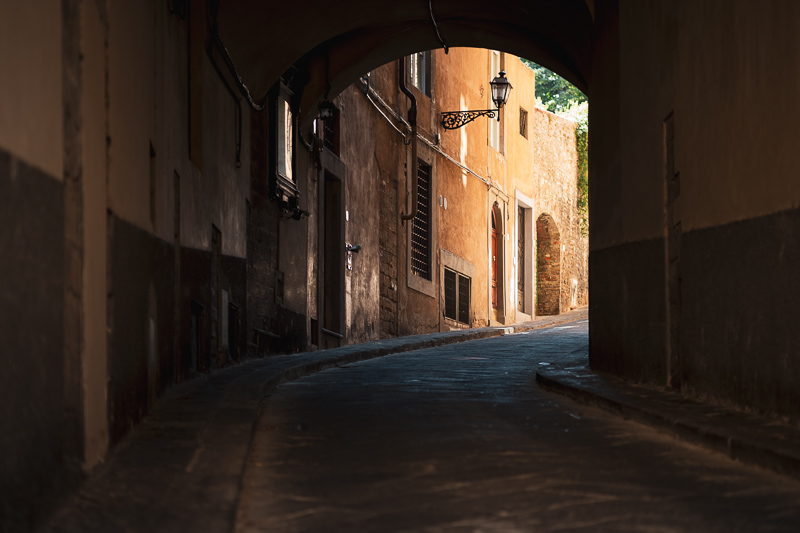


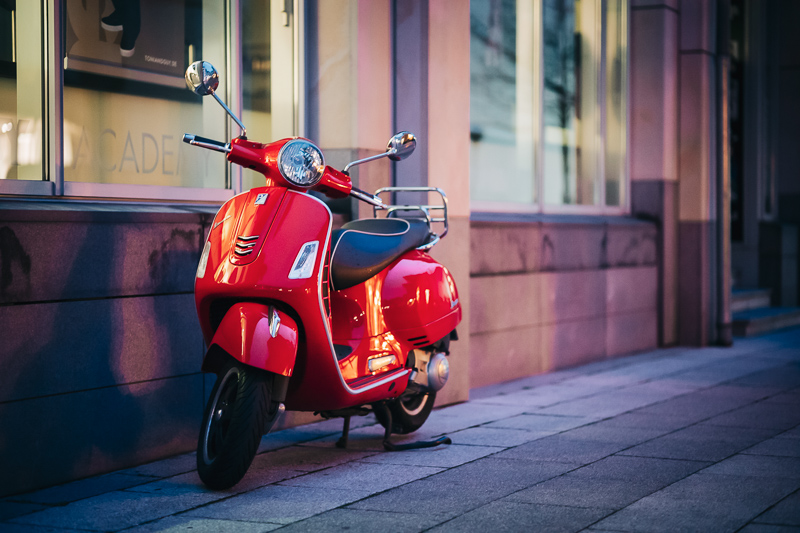

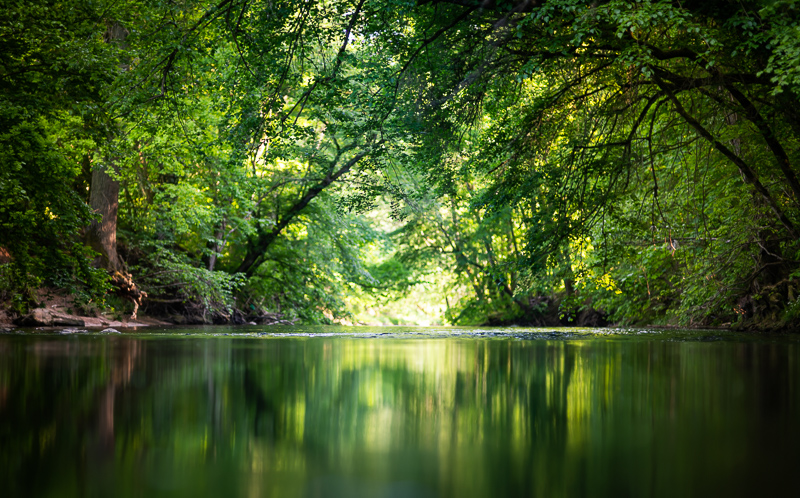
Most of the sample images in this review can be found in full resolution here.
Contents
Specifications / Version History
75mm is one of the 6 typical Leica rangefinder focal lengths and over the years there have been 4 different 75mm lenses made by Cosina, interestingly all with a different maximum aperture. They are in chronological order:
- Voigtlander 75mm 2.5 Color-Heliar
230g (black and silver), 6/5 design, 43 mm filter thread, 10 aperture blades, MFD 1.0 m, M39, 1999-2010 - Voigtlander 75mm 1.8 Heliar Classic
427g (black), 6/3 design, 52 mm filter thread, 10 aperture blades, MFD 0.9 m, M-mount, 2010-2019 - Voigtlander VM 75mm 1.5 Nokton
350g (black/silver), 7/6 design, 58 mm filter thread, 12 aperture blades, MFD 0.7 m, M-mount, 2019- - Voigtlander VM 75mm 1.9 Ultron (MC/SC)
290g (black glossy/matte), 7/5 design, 49 mm filter thread, 12 aperture blades, MFD 0.5 m, M-mount, 2023-
In early 2024 Cosina announced that this 75mm 1.5 will also come as E-mount, Z-mount and RF-mount lens.
This is a review of the fastest one, the Voigtländer VM 75mm 1.5 Nokton. It has the following specifications:
- Diameter: 63mm
- Length: 63mm
- Weight: 350g (measured)
- Field of view: 32.6° (diagonally)
- Filter Diameter: 58mm
- Number of Aperture Blades: 12 (straight)
- Elements/Groups: 7/6
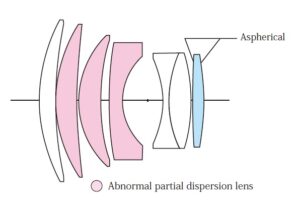
- Close Focusing Distance: 0.7m
- Maximum Magnification: 1:7.1 (measured)
- Mount: Leica-M (Sony E, Nikon Z, Canon RF)
buy from amazon.com | amazon.de | B&H | ebay.com | ebay.de for $899 (affiliate links)
Handling / Build Quality
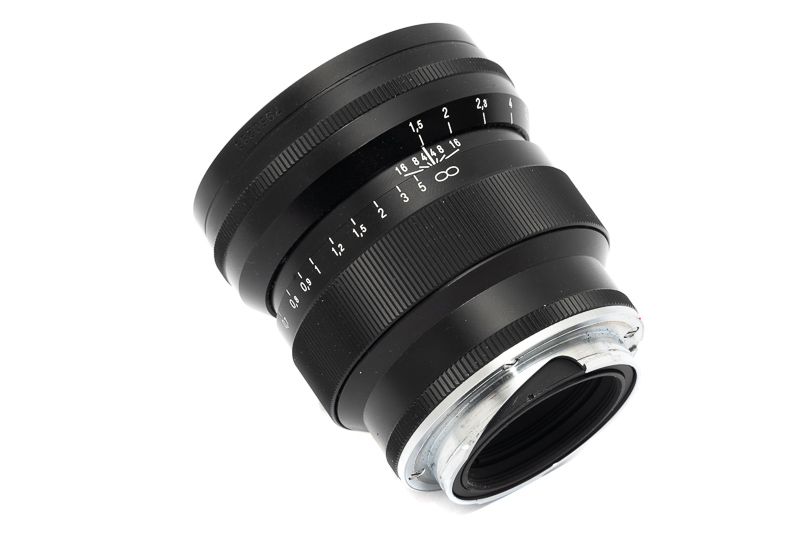
I said it in many, many of my Voigtländer lens reviews: there is no clear line when it comes to the casing design of these lenses. This 75mm 1.5 Nokton is part of Cosina’s “Vintage” line. This is only related to the casing design though, not to the optical performance (that would be “Classic”).

Nevertheless, I have used several lenses from that “Vintage” line (21mm 3.5, 28mm 2.0 Ultron MK II, 35mm 1.7 Ultron) and none of them looks even remotely like this 75mm lens. Its design rather resembles that of the short-lived “SE” lenses for Sony E-mount.
Now that was a lot of history. Point is, this lens does not feel as solid as most of the other Voigtländer M-mount lenses. The aperture ring doesn’t feel as solid and some people also encountered focus creep issues with this lens (luckily not the case for my sample so far). At the end of the day this is the price to be paid for the lightweight construction. Now personally, I like the minimalistic design of this lens very much.
The focus ring has a nice, even resistance and travels ~100° from the minimum focus distance of 0.7 m to infinity. The aperture ring features half-a-stop click-stops and travels ~120° from f/1.5 to f/16. Unlike some other late Voigtländer lenses the click-stops are spaced equidistantly here.
A vented lens hood is also included here and it features a bit of an interesting design, as you first need to screw on a short hood adapter tube and then the actual hood attaches to that tube. I don’t really know why that additional tube was necessary here.
On compatible M-mount cameras this lens brings up the correct 50/75mm frameline pair. There is only very little rangefinder blockage without the hood and the lens set to infinity, but a lot when the hood is attached or the lens is focused at closer distances.
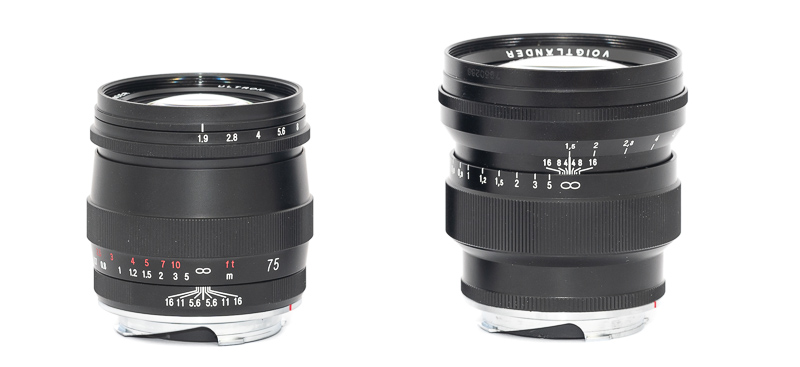
The slightly slower Voigtländer VM 75mm 1.9 Ultron has been released a few years after this f/1.5 lens and apart from being a bit smaller it also features a more typical VM casing design and a generally more solid build.
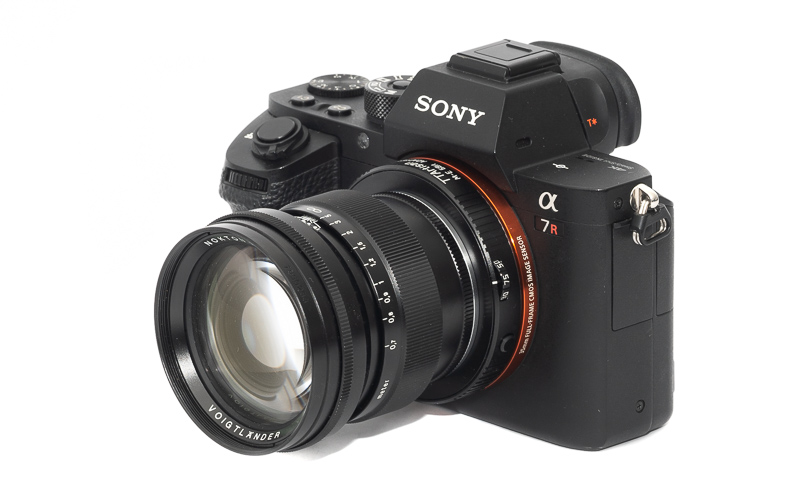
The lens can be mounted to Sony E-mount cameras and several other modern mirrorless cameras via adapters. If you are using a Sony E-mount or a Nikon Z-mount camera you can also equip it with basic EXIF data by using the TTArtisan 6-bit adapter or with okayish autofocus by using the Techart LM-EA9 AF adapter. I often use this lens on my Sony cameras with said TTArtisan 6-bit adapter.
Vignetting
Light falloff
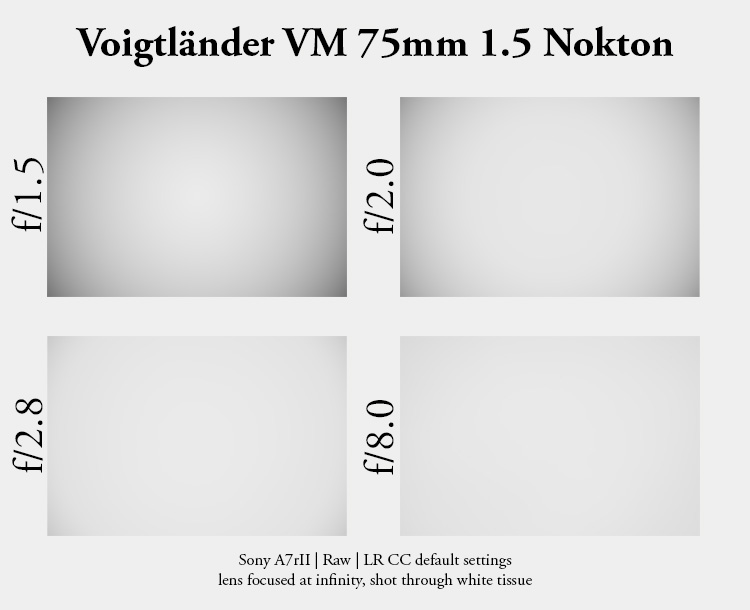
| f/1.5 | 2.4 EV |
| f/2.0 | 1.7 EV |
| f/2.8 | 1.0 EV |
| f/4.0 - f/16 | 0.4 EV |
At its maximum aperture of f/1.5 I measured 2.4 EV which improves to 1.7 EV at f/2.0 and to barely noticeably 0.4 EV from f/4.0 onwards.
The Voigtländer VM 75mm 1.9 Ultron showed 2.2 EV at f/1.9, so a very similar amount of vignetting. At f/2.0 and f/2.8 this faster f/1.5 lens does slightly better, but the difference is not as big as to actually get excited about. Stopped down they perform pretty much the same.
Also the Leica 75mm 1.4 Summilux-M and the 7Artisans 75mm 1.25 perform similar in this category, so the performance here is nothing I would base my buying decision on.
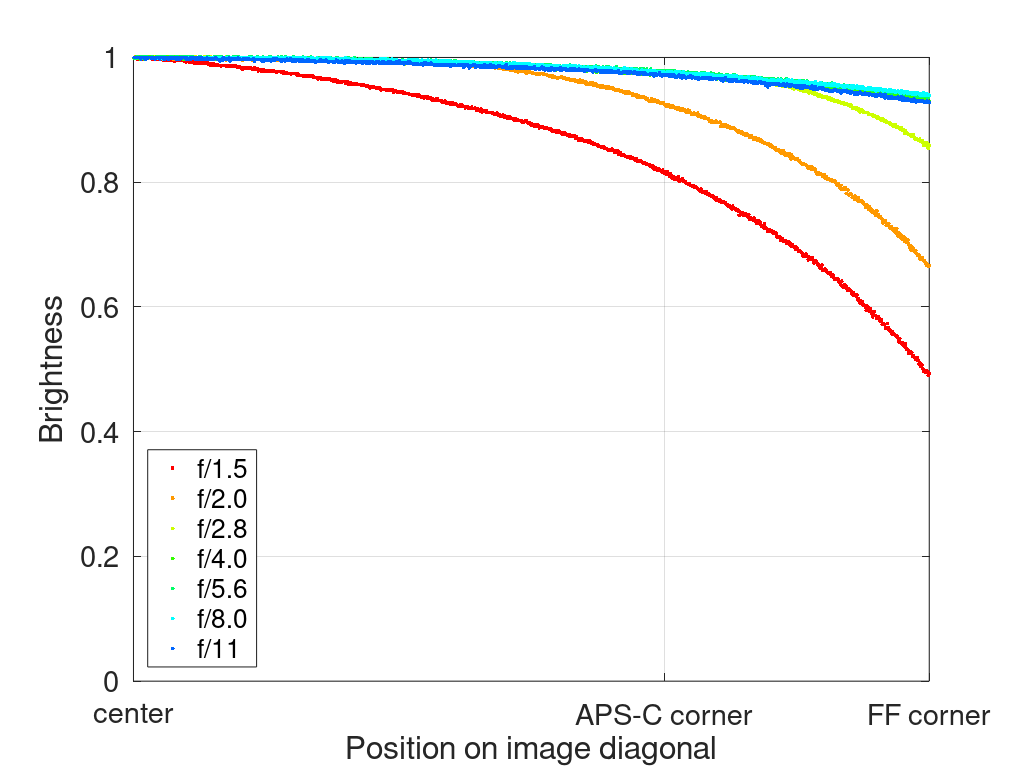
It is recommended to have a look at this article first to get an idea how this brightness graph works.
Optical vignetting
Fast lenses usually show a noticeable amount of optical vignetting, especially so the compact ones. Without going too much into technical details optical vignetting leads to the truncation of light circles towards the borders of the frame.
In the center of the frame almost every lens will render a perfect circle, but only lenses with very low optical vignetting will keep this shape in the corners.
So in the following comparison we move from the center (left) to the extreme corner (right) and see how the shape of the light circle changes.
When it comes to compact, fast lenses a high amount of optical vignetting should not come as a surprise, so this is what we are seeing here as well. Compared to the slower Voigtländer VM 75mm 1.9 Ultron this f/1.5 lens with its bigger lens elements does have an advantage though, showing almost no optical vignetting at f/2.8 whereas the 75mm 1.9 Ultron still shows more rectangular highlights in the corners.
The Leica 75mm 1.4 Summilux-M is the worst performer in this category, followed by the 7Artisans 75mm 1.25.
If the performance in this category is important to you, I would recommend to go for this 75mm 1.5.
Sharpness
Focus shift
50% crops, A7rII
We are dealing with one of those lenses here, where the plane with maximum contrast is not the plane with maximum resolution close to the minimum focus distance. The Canon EF 85mm 1.2 L II is another example for this behaviour.
This makes focusing a bit harder, as you have to decide whether you prefer a softer image with more details or a higher contrast one with less details.
It also makes evaluating focus shift harder: if you focus at f/1.5 for maximum resolution and then stop down all is fine, if you go for maximum contrast and then stop down the lens is exhibiting focus shift.
At longer focus distances this is luckily less of an issue, just keep in mind this is not a macro lens and not optimized for shooting at or near the minimum focus distance.
Infinity (24mp Sony A7II/24mp Leica M10)
On a Sony E camera (or most other non Leica-M mirrorless cameras) with its thicker filter stack sharpness is very good in the center from wide open, but the midframe area is significantly softer. By f/5.6 it is still possible to get good across frame sharpness.
When used on the Leica M10 the performance is noticeably better.
The midzone dip is not as pronounced here. The midframe and corners show a similar performance at f/1.5 and f/2.0 here with a little less contrast and resolution compared to the center.
By f/2.8 the midframe gets a noticeable boost in contrast and the corners in resolution, so already at this aperture setting we get very good across frame performance.
In 2024 Cosina announced that this lens will also be available for Sony E, Nikon Z and Canon RF. I expect that these versions are optimized for each camera so they will perform as well as this VM version does on a Leica M camera.
Portrait 2.0 m (24mp Sony A7III/Leica M10)
For portraiture it isn’t so important how flat the field is, it is more interesting to see what the sharpness is like when focused at different parts of the frame to take field curvature out of the equation.

We will be looking at 100% crops from the 24mp Sony A7III and the Leica M10. Both lenses do not have an anti aliasing filter in front of the sensor.
center
Sony A7III <—> Leica M10
inner midframe
Sony A7III <—> Leica M10
outer midframe
Sony A7III <—> Leica M10
observations
A focus distance of 2.0 m seems to be close to what the Voigtlander VM 75mm 1.5 Nokton has been optimized for.
Differences between f/1.5, f/2.0 and f/2.8 are minimal and the falloff is also reduced with the inner midframe showing a performance similar to the center.
Close 1.0 m (24mp Sony A7III/Leica M10)
center
Sony A7III <—> Leica M10
inner midframe
Sony A7III <—> Leica M10
outer midframe
Sony A7III <—> Leica M10
Observations
A shooting distance of 1.0 m is not that far away from 0.7 m – the minimum focus distance of this lens. This does not seem to be the focus distance this lens has been optimized for (it doesn’t feature a floating elements design), as at its maximum aperture it is a bit soft, even more the further you are away from the center of the frame.
Stopping down to f/2.0 and f/2.8 improves the performance noticeably.
If the Leica crops look worse compared to the Sony ones, this is very likely due to setting precise focus is much easier on the Sony camera.
Flare resistance
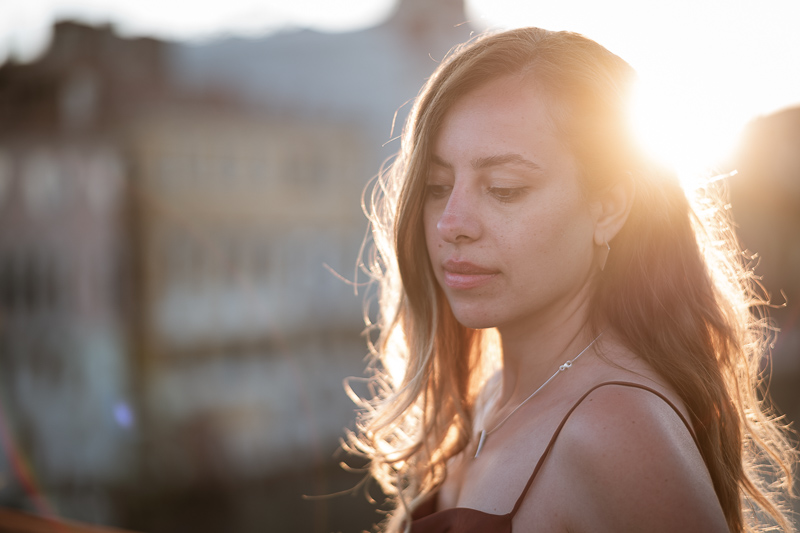
As always evaluating flare is a complex matter since you can get any lens to look bad if you push it hard enough and a slight change of scenario will affect results, sometimes a lot.
Tele lenses, even short ones, usually struggle in this department and you can also make this lens look bad, but having taken more than a thousand pictures with this lens over the years there is only a handful with artefacts of some kind among them – most of them you see here.
I never really use the hood of this lens as I find it unnecessarily bulky. This was one of the rare cases where I caught very big ghosts, probably some kind of internal reflections. Shading the lens with my hand was enough to get rid of this completely:
But really, most of the time you can just shoot straight into the sun without any issues whatsoever:
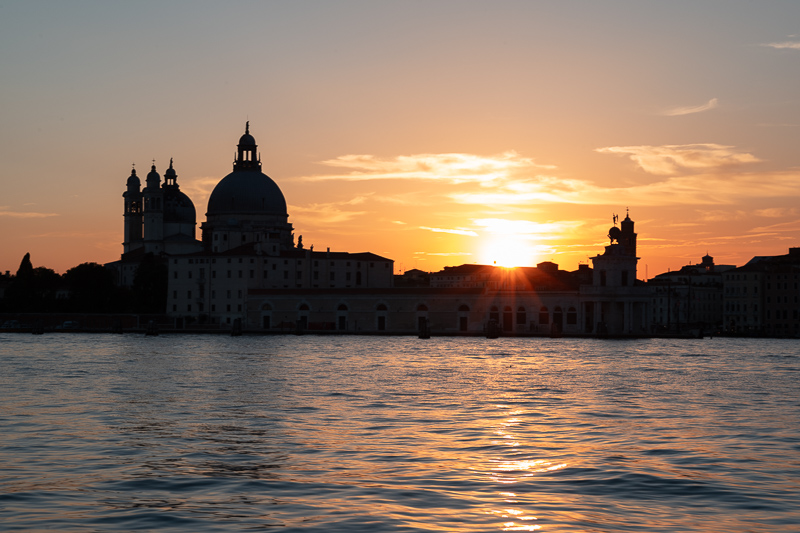
Coma
100% crops from extreme corner, focused on center, M10
Astrophotography isn’t exactly a typical application for this lens, but were a still checking the coma correction as this is something that can ruin blue hour pictures or nightly cityscapes. There is some coma visible at f/1.5 to f/2.0, by f/2.8 it is hardly noticeable anymore and gone by f/4.0.
From f/2.8 onwards the performance is very similar to the Voigtländer VM 75mm 1.9 Ultron.
Distortion
This Voigtländer VM 75mm 1.5 shows a low amount of slightly wavy distortion. There is a correction profile in CameraRAW and Lightroom available that does a very good job at correcting this.
Bokeh

The bokeh is what I really like about this lens. Now these days there are affordable 85mm 1.4 AF lenses available for the modern mirrorless cameras, but this is not the case for M-mount cameras and these lenses are also not nearly as compact as this Voigtländer VM 75mm 1.5 Nokton.
The bokeh/size&weight ratio is one of the reasons I use this lens a lot. It has a 10% bigger entrance pupil than for example the Leica 90mm 2.0 while being almost 30% lighter, this is very impressive.
Close distance
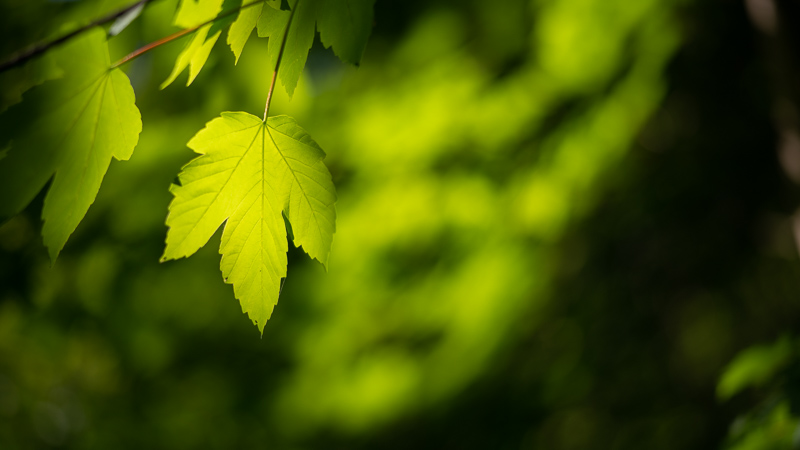
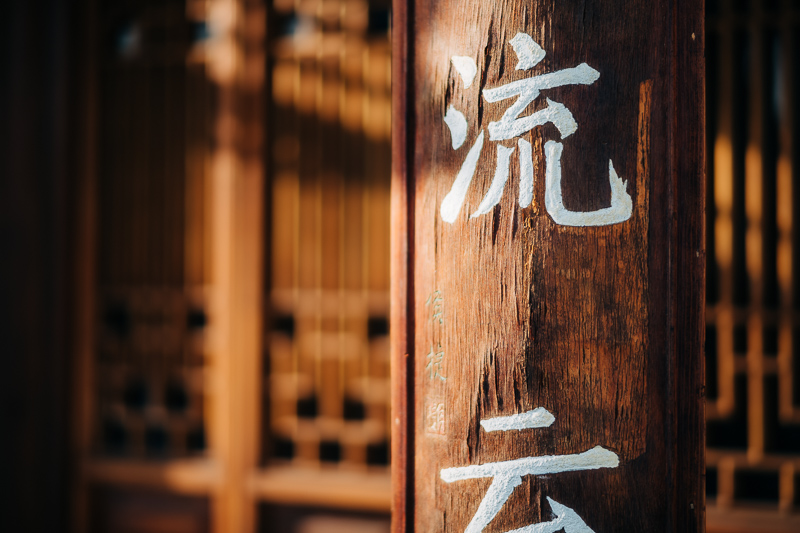

Unsurprisingly at close distances the bokeh is very smooth. This faster f/1.5 lens does not focus as close as the slightly slower VM 75mm 1.9 Ultron though, so I sometimes carry an old Leica Elpro 4 close up filter that I attach via a 58->55mm step-down ring. You can often find the Elpro 4 at affordable prices on ebay.com (affiliate link).
Mid distance
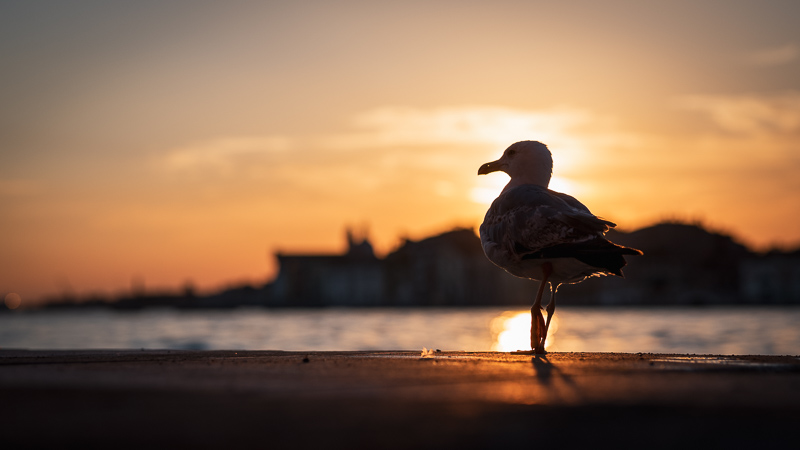
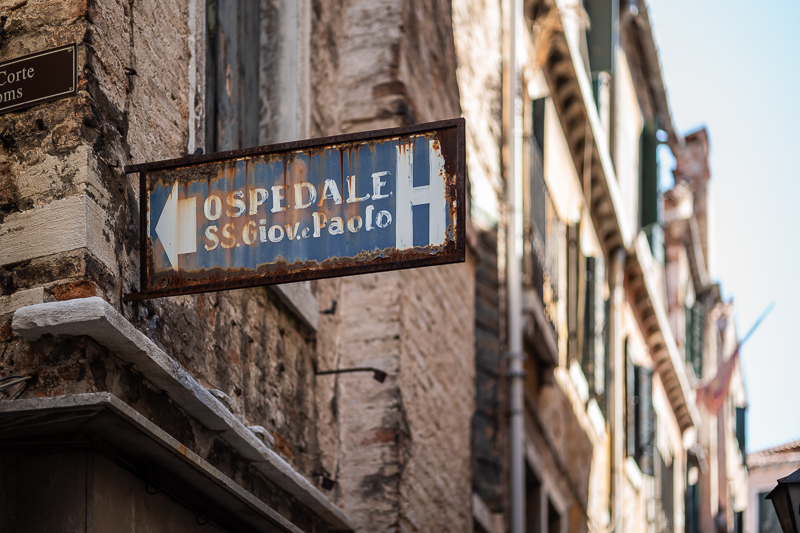
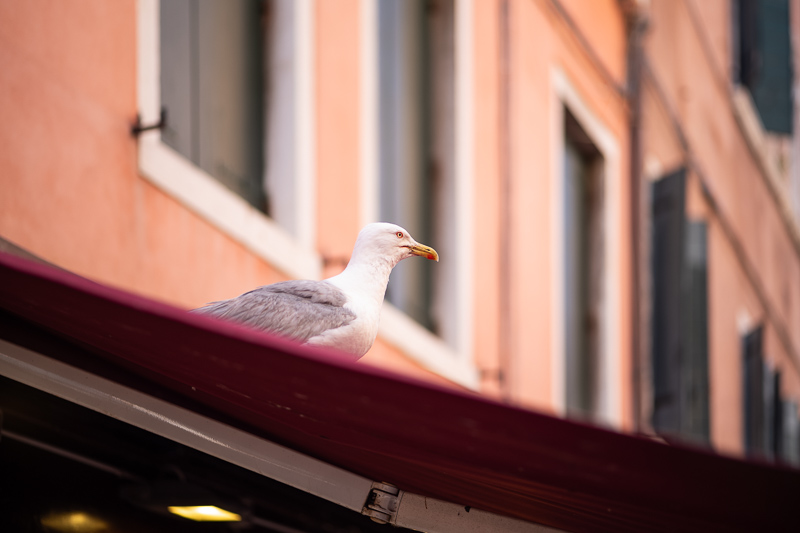
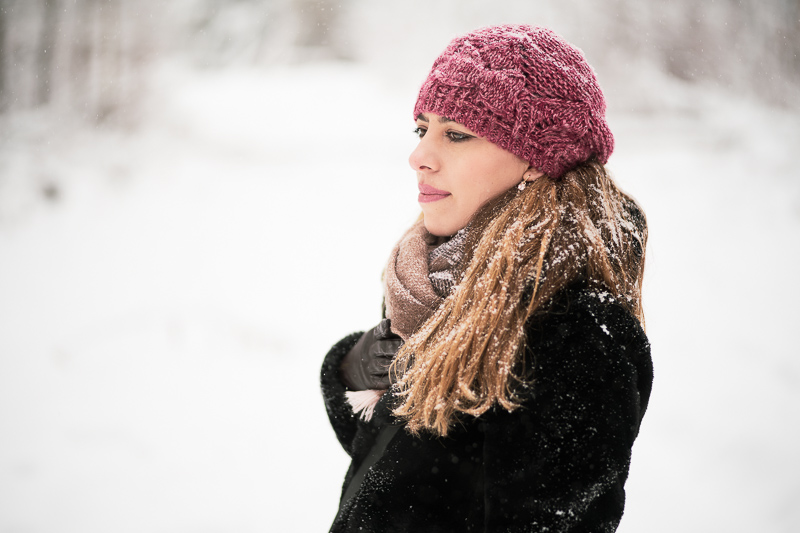
Depending on the background this lens does not render a perfectly smooth bokeh in any kind of situation. As you have already seen in the optical vignetting section, cat’s eyes are also quite pronounced at wider apertures and disappear around f/2.8 to f/4.0:
Long distance
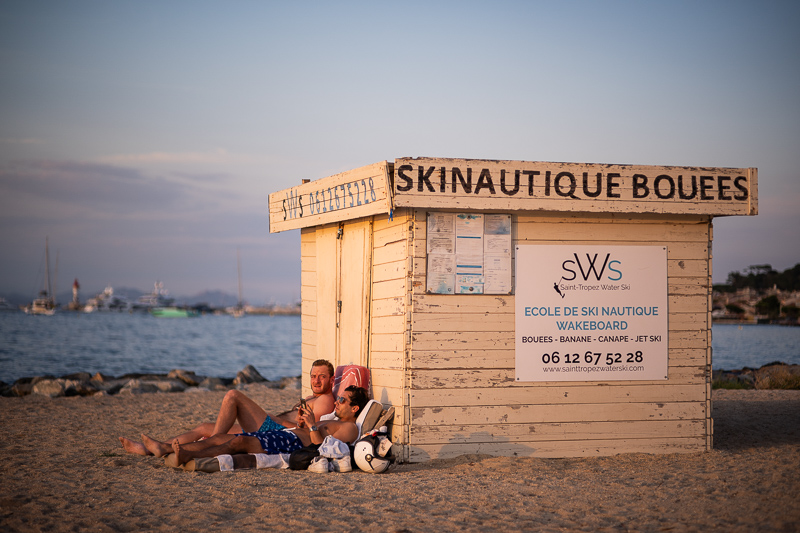
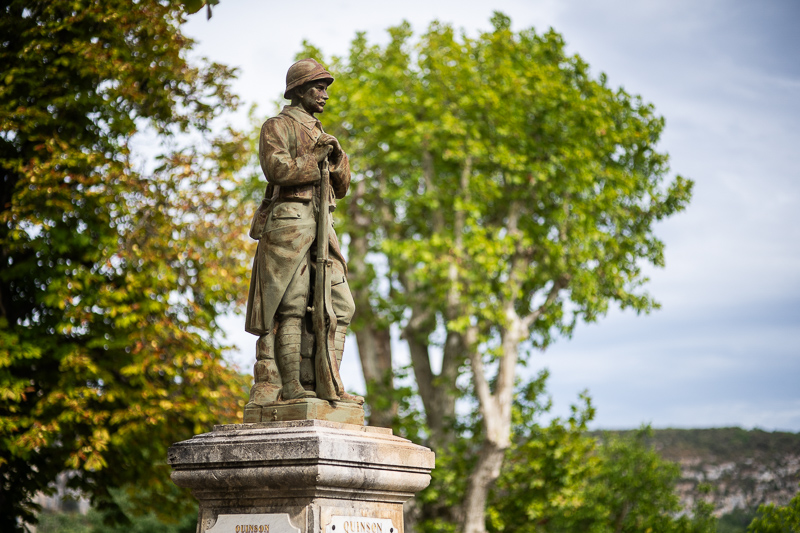


At longer distances the bokeh is less smooth and the optical vignetting makes itself felt more. Some of the bigger 85mm lenses will perform better here, as you can see in this comparison with the Sony FE 85mm 1.4 GM:
But this doesn’t take away from the fact, that I think this is a very capable portrait lens for M-mount. Maybe the best balanced one even.
Sunstars
This 75mm 1.5 features Cosina’s newer aperture diaphragm design with 12 straight aperture blades which yields very distinct sunstars from f/2.0 to f/11.
If you want to know more about sunstar rendering of different lenses have a look at this article.
Chromatic aberration
Lateral
The Voigtländer VM 75mm 1.5 Nokton only shows a very low amount of lateral CA. If needed this is easily to correct in post with just one click, e.g. in Lightroom.
Longitudinal
The Voigtländer VM 75mm 1.5 shows some bokeh fringing at wider apertures and also some purple fringing:
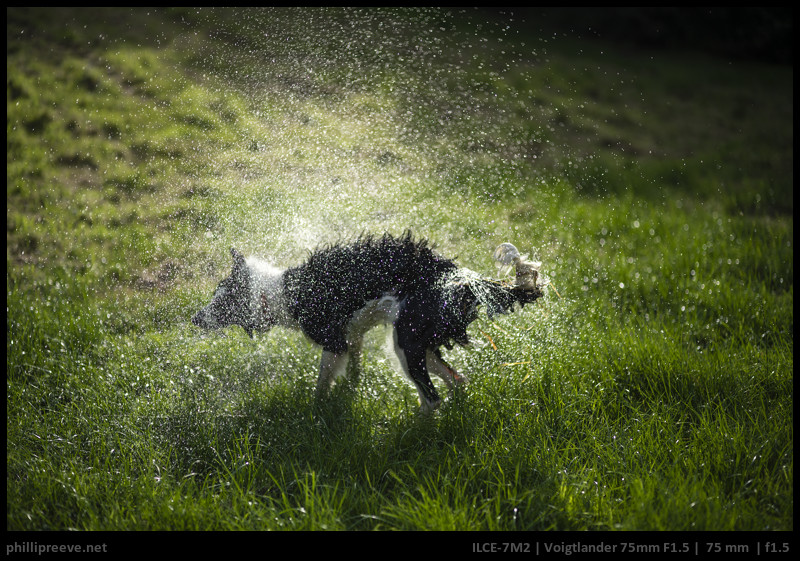
This is a solid performance for such a compact yet fast lens. The slightly slower but much cheaper Samyang 75mm 1.8 AF does a bit better here. The Voigtländer VM 75mm 1.9 Ultron performs similar at f/2.0, but worse at f/2.8.
Conclusion
good
|
average
|
not good
|
The Voigtländer VM 75mm 1.5 Nokton is one of those M-mount lenses that I use as much on Sony cameras as on Leica cameras, because there isn’t really anything native quite like it. Regardless of camera, this is a very capable fast short tele lens with good sharpness and nice bokeh in a very compact and lightweight package.
If you are using an M-mount camera be aware that with a 75mm lens with a maximum aperture of f/1.5 you are working at the limit of the accuracy of the rangefinder mechanism and are very likely to get way more consistent results with an electronic viewfinder or using live view. Therefore I also don’t consider this a great choice for analogue M-cameras.
Before the release of the Voigtländer VM 75mm 1.9 Ultron I considered this Voigtländer VM 75mm 1.5 Nokton the best balanced fast portrait lens in M-mount and for me this is still the case, but I also see some people preferring the f/1.9 Ultron for its better minimum focus distance and more solid build.
To my surprise Cosina announced that this lens will also be available with Sony E, Nikon Z and Canon RF mount, so even though there are little drawbacks using the M-mount version on those cameras, it might be worth waiting for those if you would prefer a native lens.
buy from amazon.com | amazon.de | B&H | ebay.com | ebay.de for $899 (affiliate links)
Alternatives
M-mount
Voigtländer VM 75mm 1.9 Ultron:
As I have been using this 75mm 1.5 for years I compared it to the newer 75mm 1.9 Ultron in pretty much all of the categories above and if you have checked you might have noticed they also perform very similar in most of them.
What are the important differences? The f/1.5 Nokton is slightly faster and therefore performs better in terms of vignetting at shared wider apertures with less cat’s eyes. The biggest benefit of the f/1.9 Ultron is that it focuses down to 0.5 m. The weight difference of only 60g (or 20%) is not really relevant to me, but it might be for you.
If you think you can make use of the 0.5 m minimum focus distance the Ultron is probably the better choice for you. Personally I like having the f/1.5 option and I also like the f/1.5’s casing design way more.
buy from amazon.com | amazon.de | ebay.com | B&H (affiliate links) for $699
Voigtländer 75mm 1.8 Heliar Classic:
I used this lens in the past, Phillip wrote a review, neither of us was impressed with its performance. Better get one of the modern 75mm Voigtländer lenses.
buy from ebay.com | ebay.de for ~$400 (affiliate links)
Leica 75mm 1.4 Summilux-M:
This Leica lens is very big and heavy, very expensive and a design from the late 1970s. Now personally I see no reason to get this over either of the two modern Voigtländers, but not everyone shares my opinion and one of this lens’ fans wrote a guest review here on the blog, so have a closer at it and decide for yourself if it is worth spending 3.5 k on this one.
buy from ebay.com starting at $3.500 (affiliate links)
Leica 75mm 1.25 Noctilux-M:
In late 2017 Leica released this even faster 75mm 1.25 as successor to the aforementiond lens. It looks like a very sharp lens from some measurements lensrentals conducted, but because of the small M-mount diameter it unsurprisingly suffers from very strong optical vignetting and personally I really wonder how much sense a 1.0 kg lens that barely even works with the rangefinder makes for the M-mount system.
For the same price of this lens you can also get any high-end fullframe camera with the latest and best eye AF in combination with any AF portrait lens you desire, a setup which will get you better results with less hassle. Your pick.
buy from amazon.com | amazon.de | B&H | ebay.com | ebay.de (affiliate links) for $14.395
7Artisans 75mm 1.25:
This is actually one of my 2 favorite 7Artisans lenses (as of mid 2023). Is it as sharp as the aforementiond Leica lens? Not really. But I found it to be sharp enough for any application I can think of for a 75mm lens and drawing a very nice and pleasing bokeh. In the end I decided to go with the 75mm 1.5 Nokton at that time (for being 250g lighter and slightly closer focusing) but it was actually a close call.
buy from amazon.com | amazon.de | B&H | ebay.com | ebay.de for $449/499€ (affiliate links)
MS-Optics 73mm 1.5 Sonnetar:
If you are looking for the smallest and lightest (~200g) lens in class that would be this MS-Optics lens. The build quality and handling is not nearly as nice as what either of the Voigtländer lenses has to offer, it isn’t as sharp and has more CA and flare issues.
Some people really enjoy the Sonnar rendering of this one, personally I saw it more as an f/2.0 lens because of some aberration issues at f/1.5 and therefore preferred to stick with my VM 75mm 1.5 Nokton.
you can sometimes find this lens on ebay.com (affiliate link) for about $1000
Other
Samyang 75mm 1.8 AF:
This Samyang AF lens is a bit lighter and also cheaper, but not made of materials as nice. It is not as good when it comes to flare resistance but shows less CA. There are quite a few reports of issues with sample variation with this Samyang lens though.
buy from amazon.com | amazon.de | ebay.com | B&H (affiliate links) for $329
Sample Images
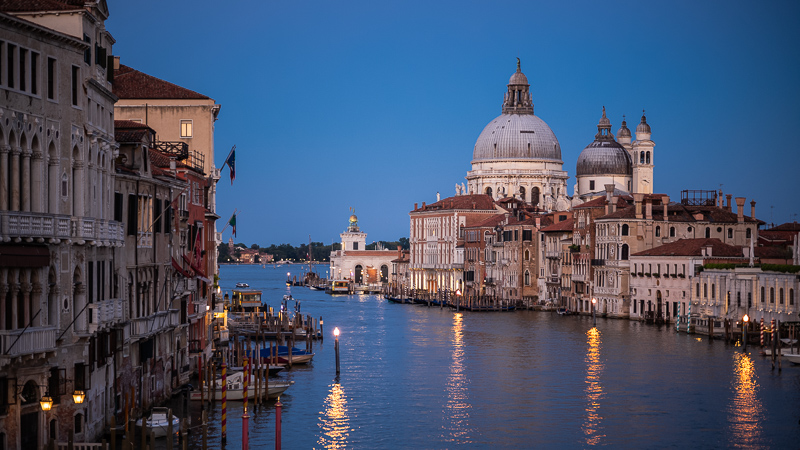

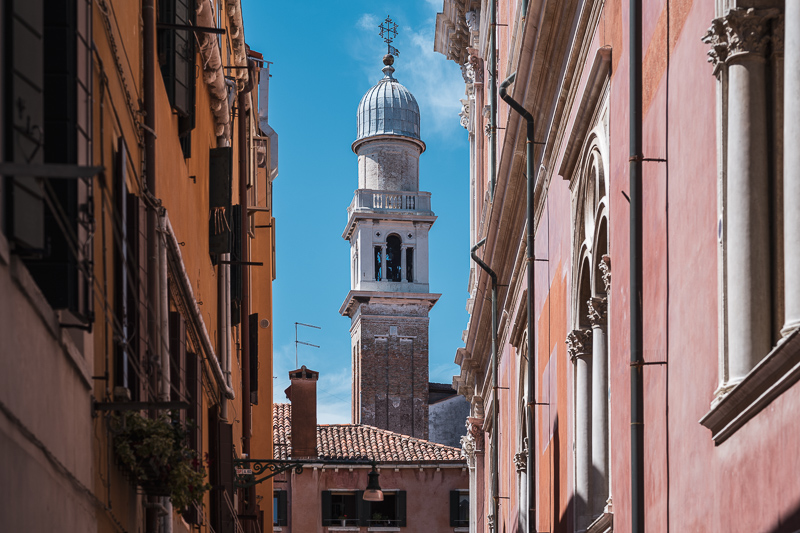
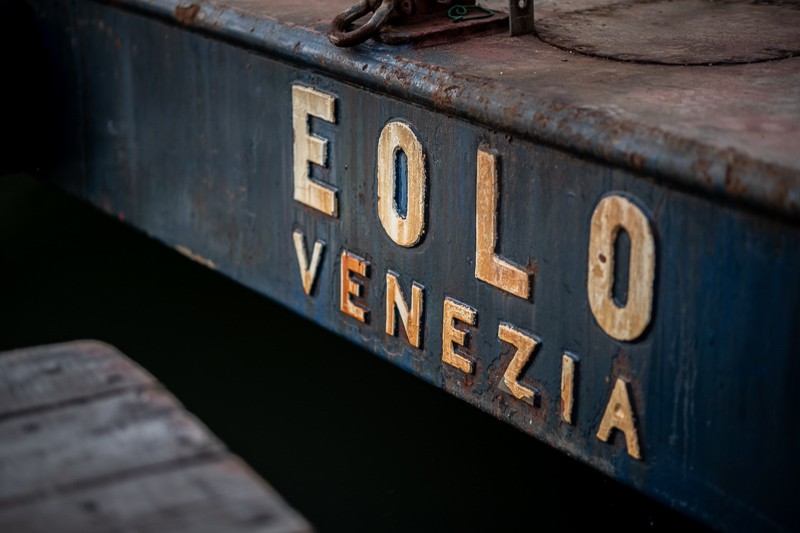

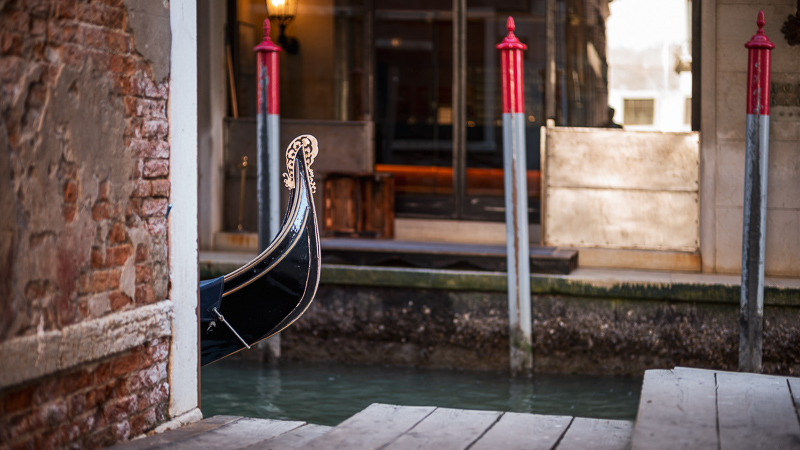
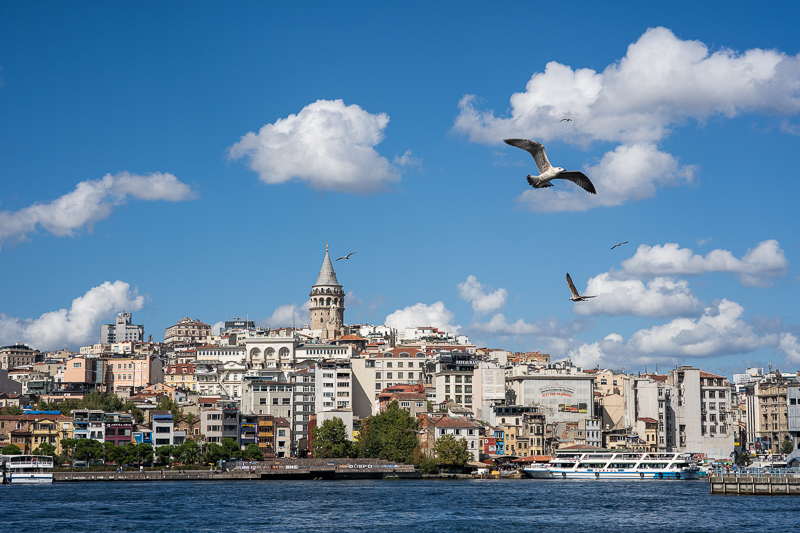
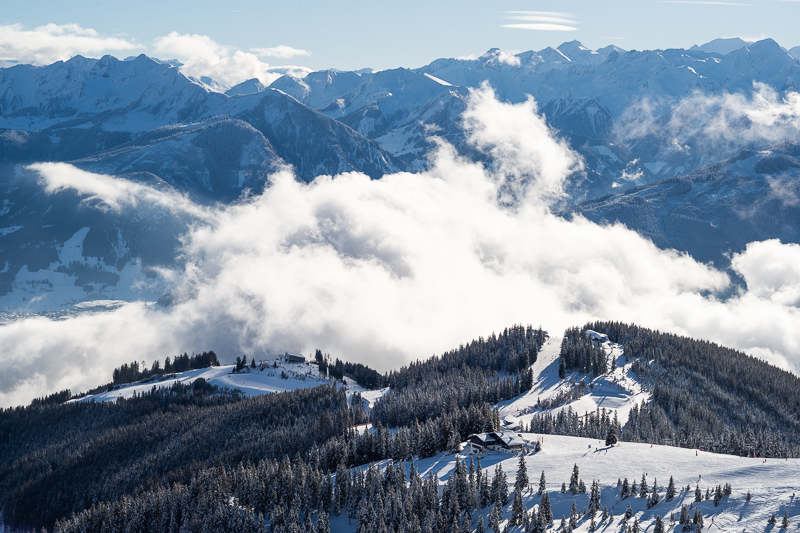
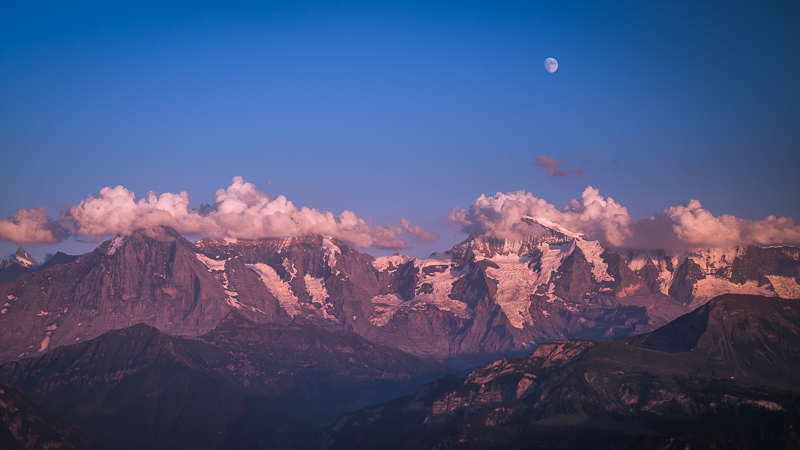
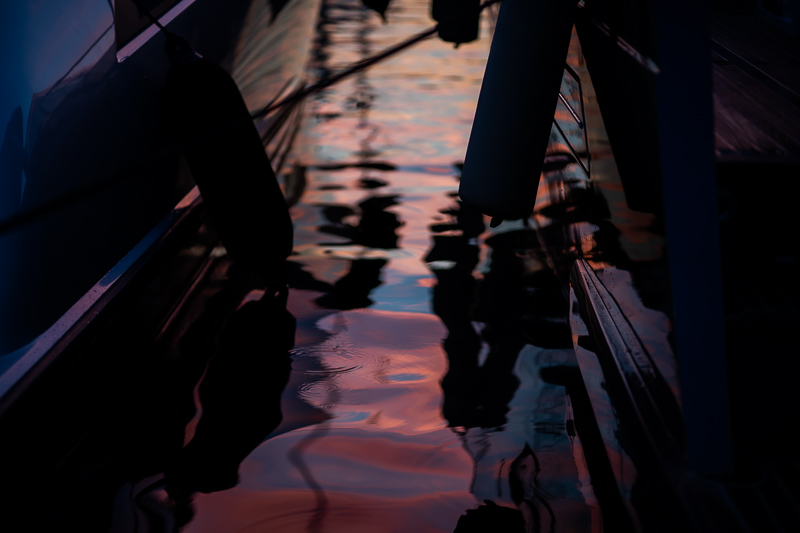
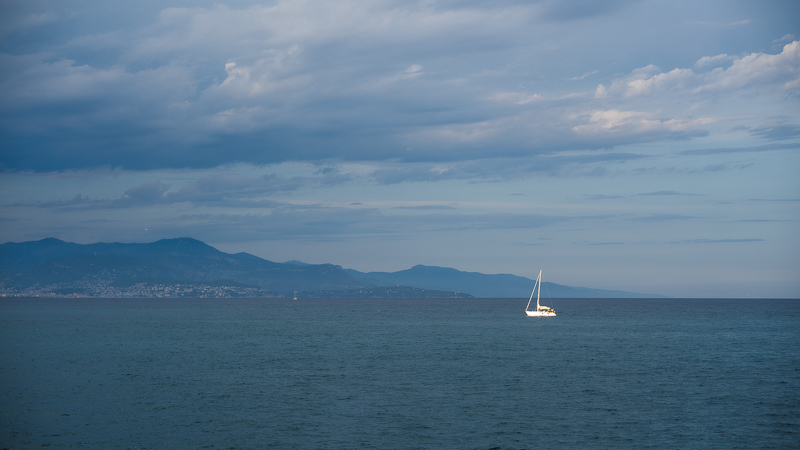
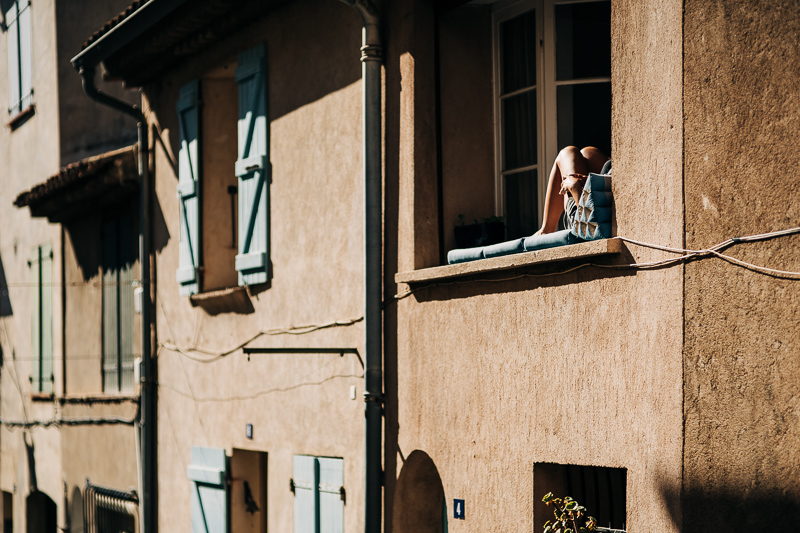

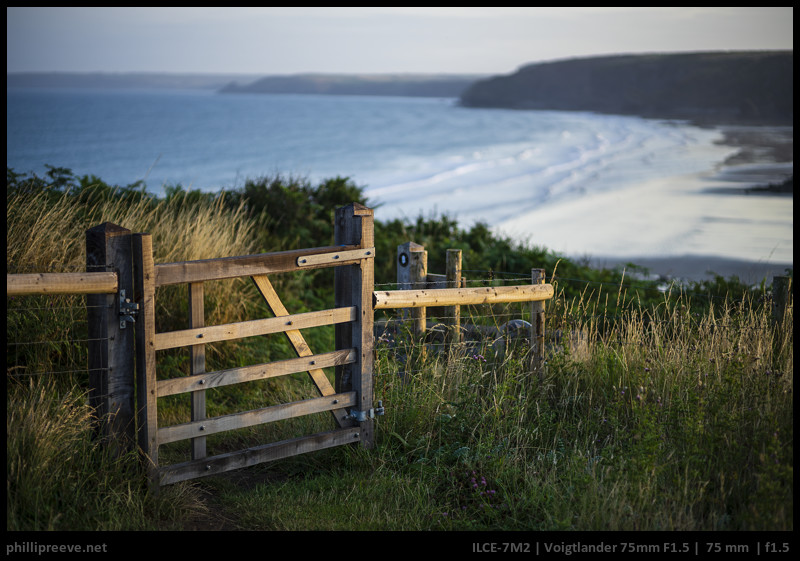
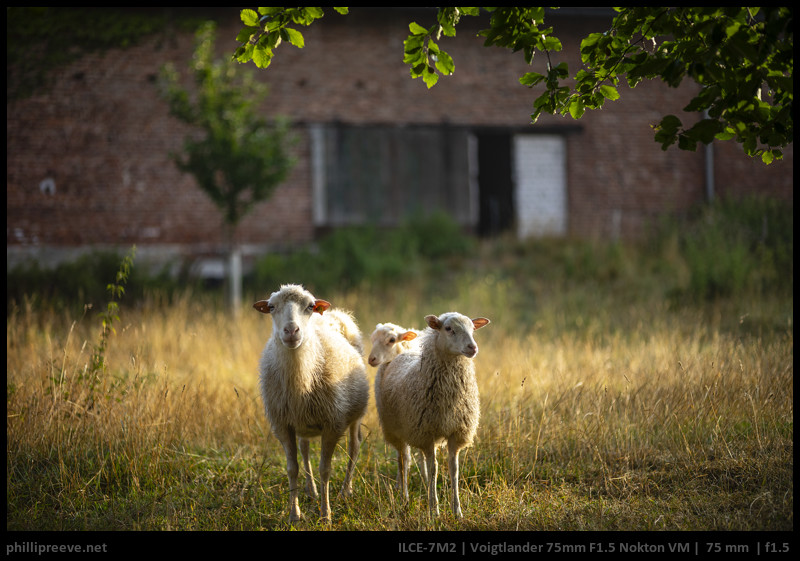
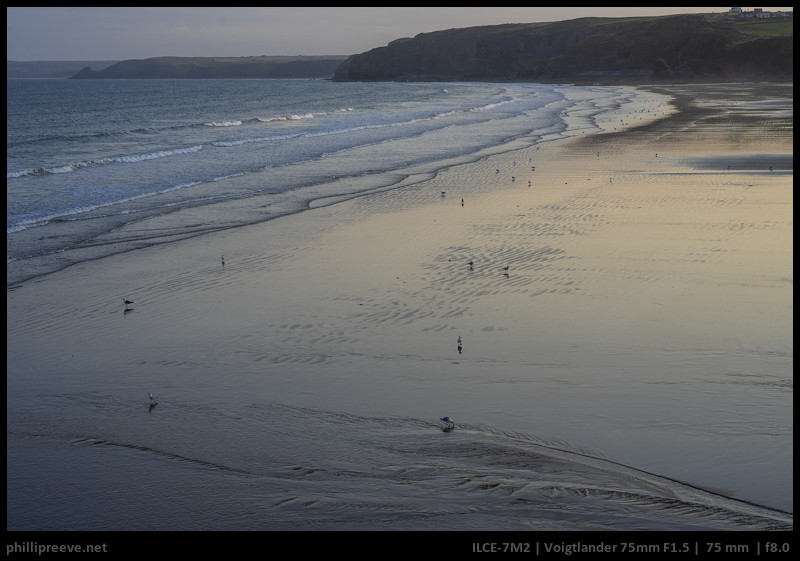
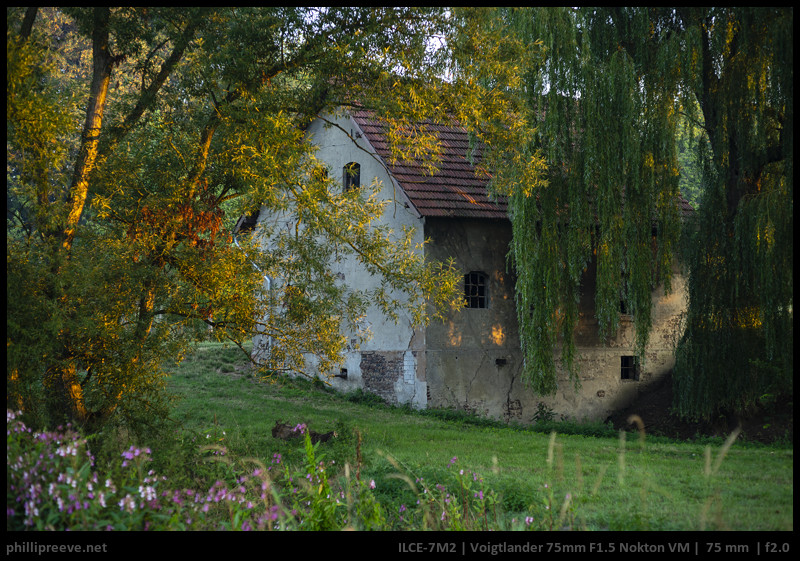
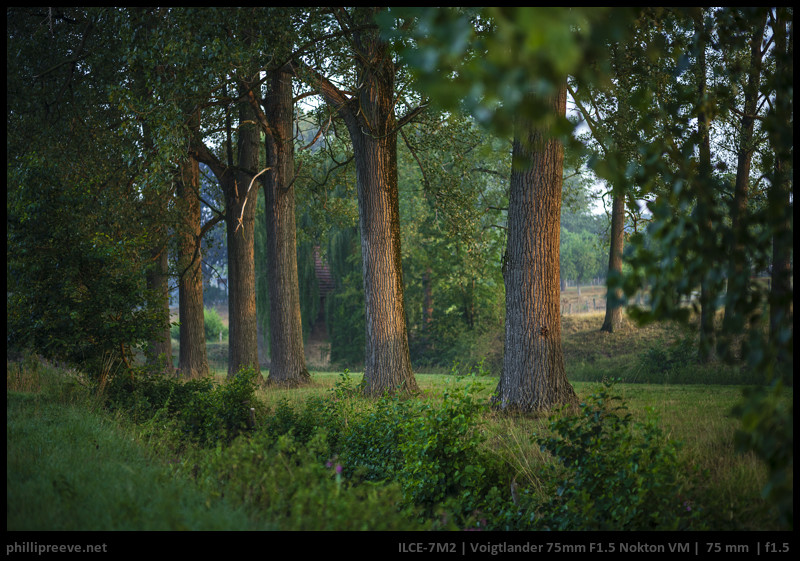
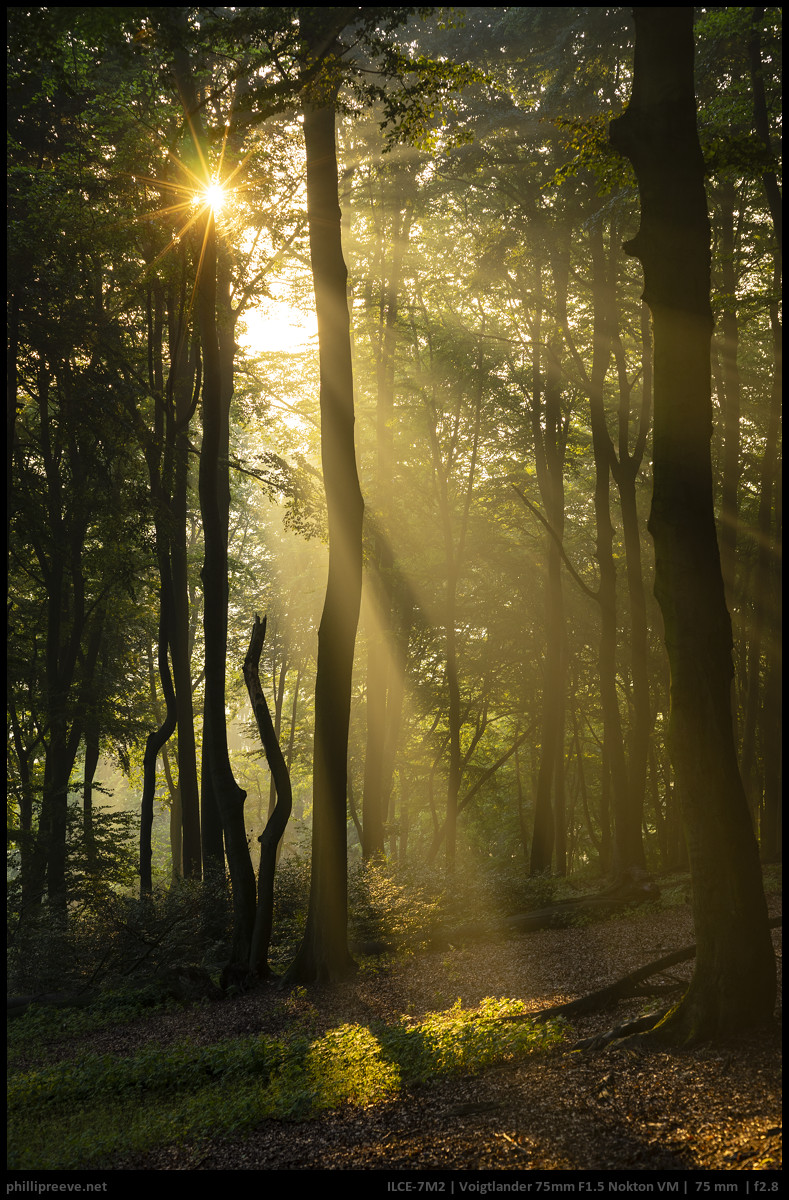
Most of the sample images in this review can be found in full resolution here.
Further Reading
- All M-mount lens reviews
- Analogue Adventures Landing Page
- Review: Laowa 35mm 0.95 – The world’s fastest 35mm lens
- Lens Aberrations explained
- Review: Voigtländer VM 40mm 1.4 Nokton MC
Support Us
Did you find this article useful or just liked reading it? Treat us to a coffee!
![]()
![]()
![]() via Paypal
via Paypal
This site contains affiliate links. If you make a purchase using any of the links marked as affiliate links, I may receive a small commission at no additional cost to you. This helps support the creation of future content.
Latest posts by BastianK (see all)
- Review: Sigma 135mm 1.4 Art DG – The actual Bokeh Master - October 25, 2025
- Analogue Adventures – Part 45: Fujichrome Provia 400X (expired) - October 22, 2025
- Review: Viltrox AF 85mm 2.0 FE Evo - October 20, 2025
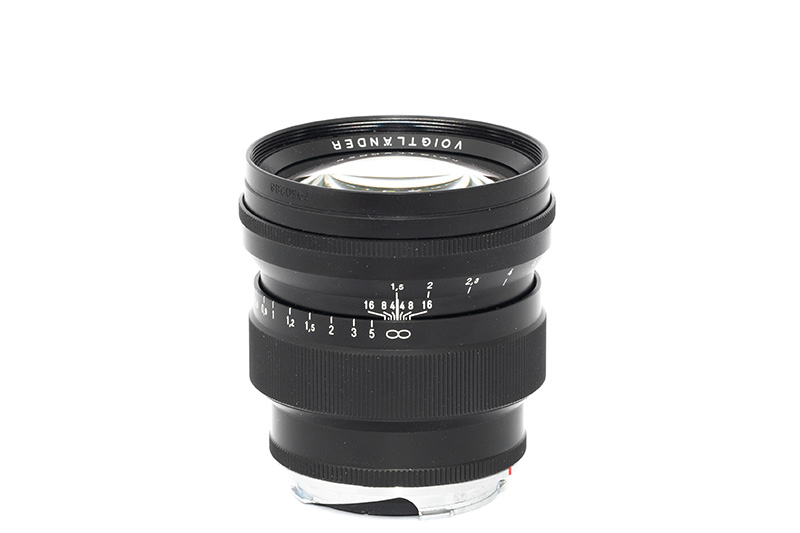
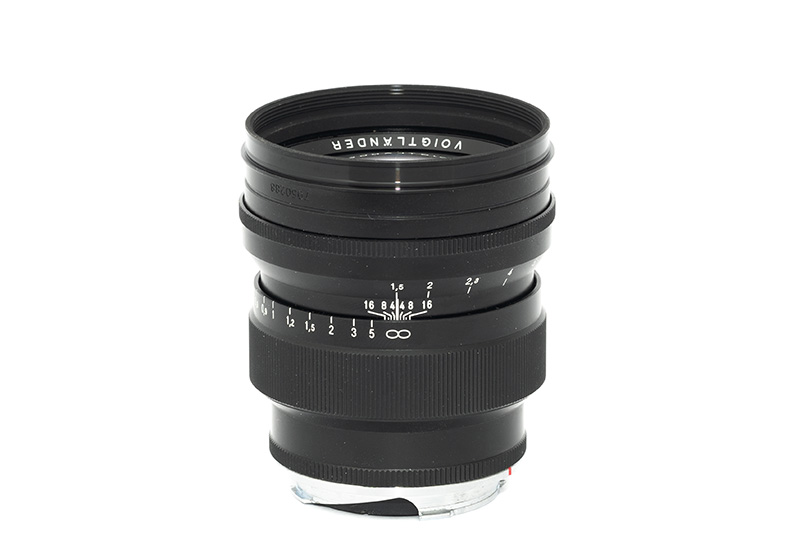
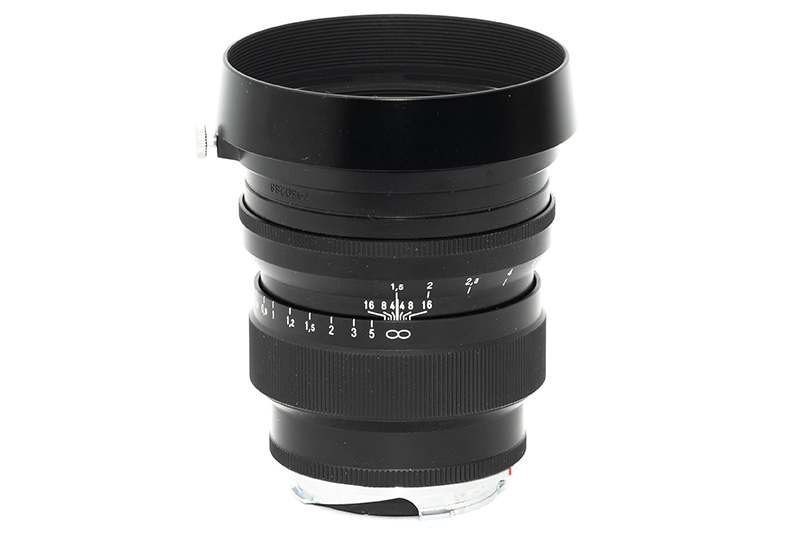
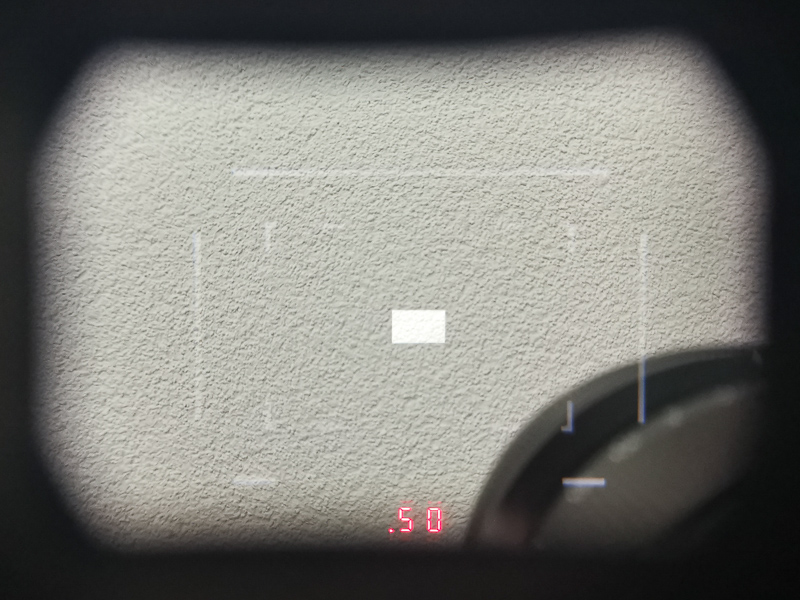
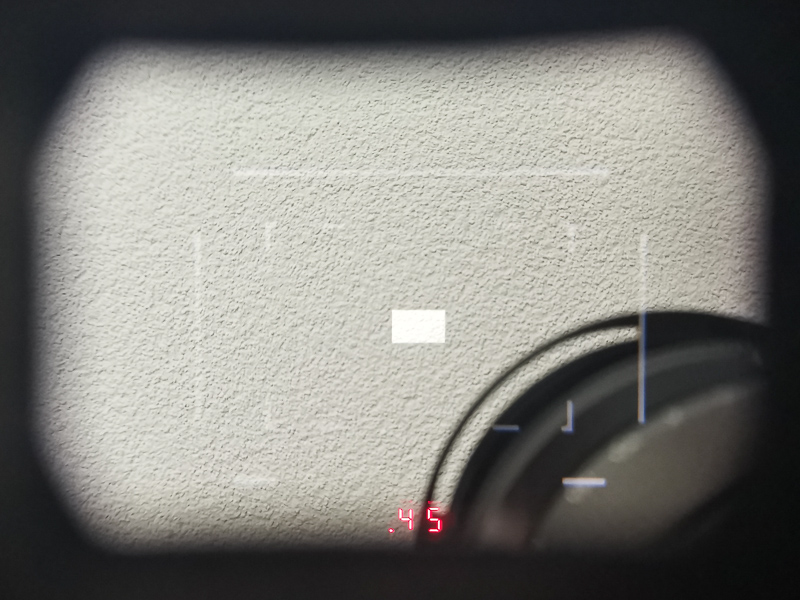
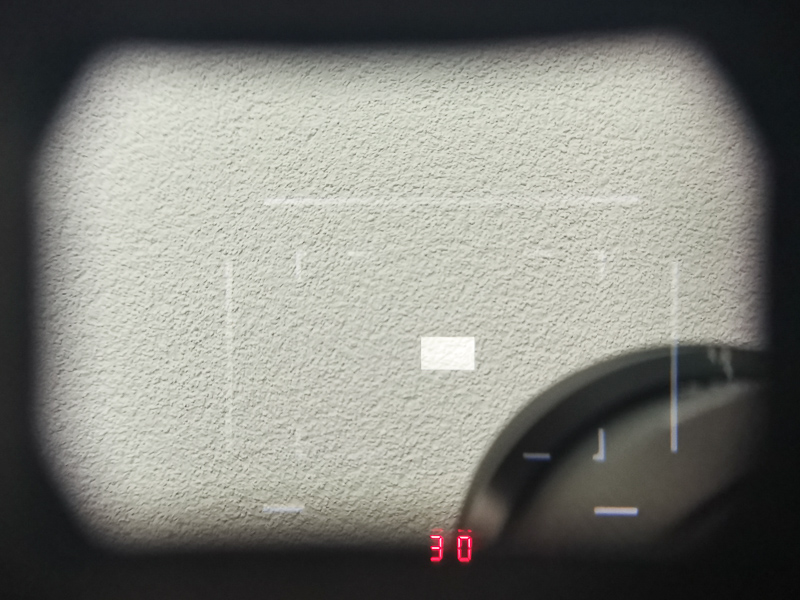
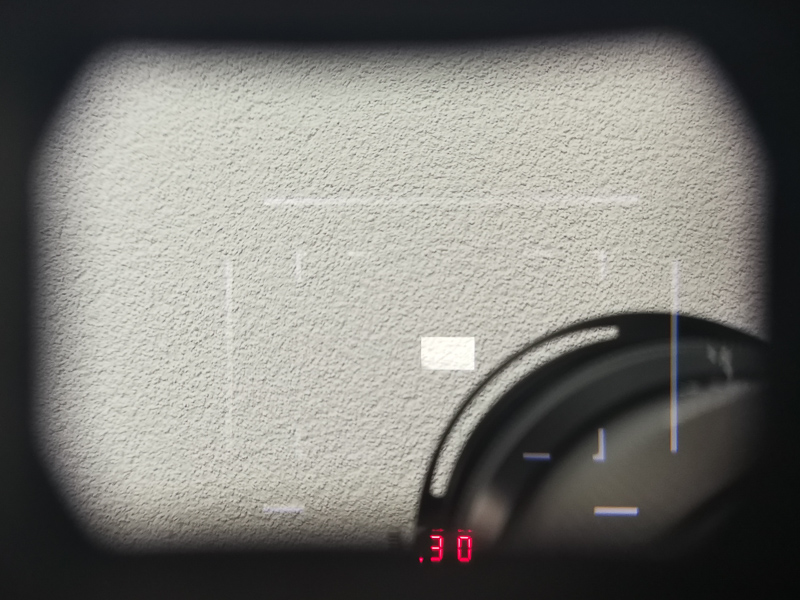





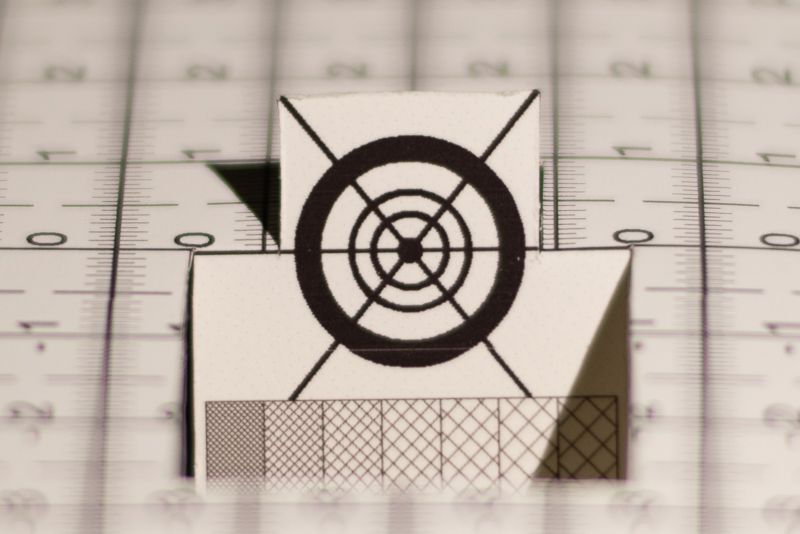
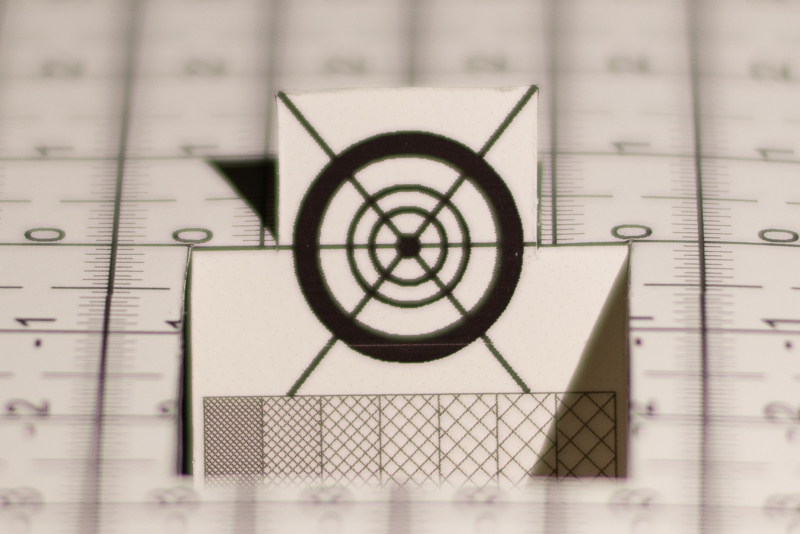
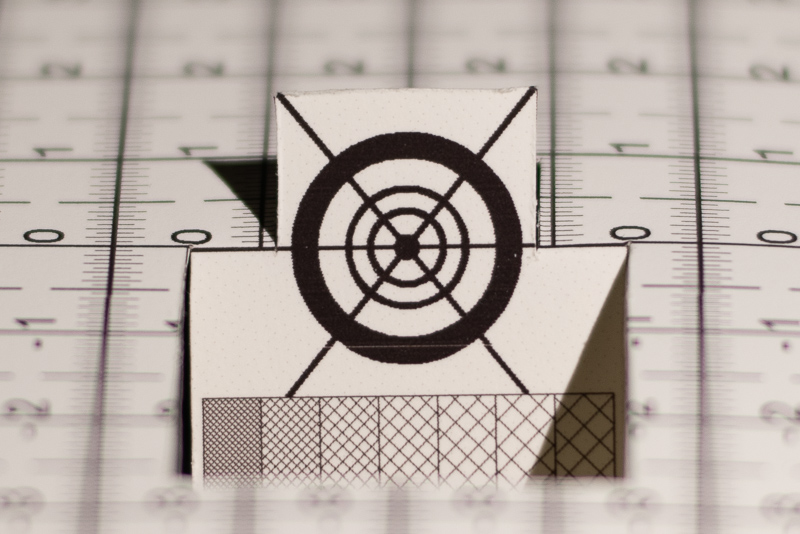




















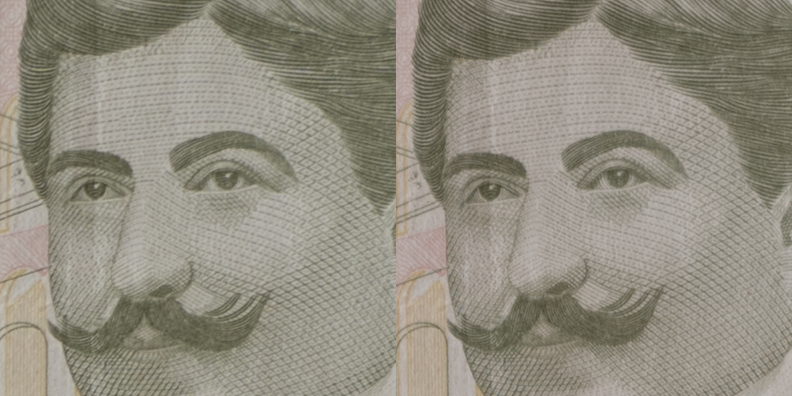


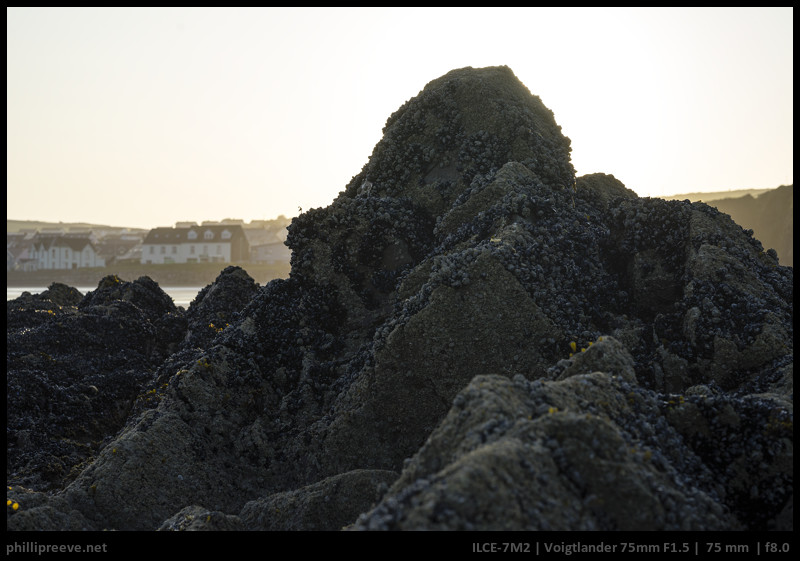
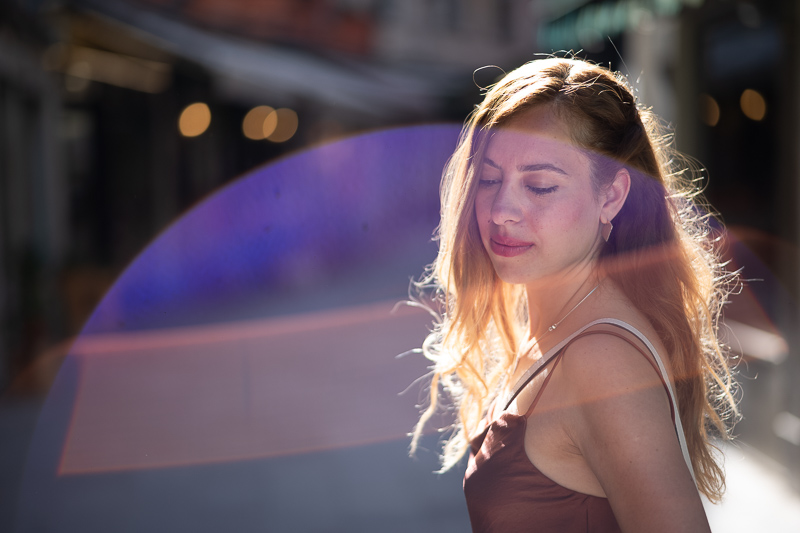
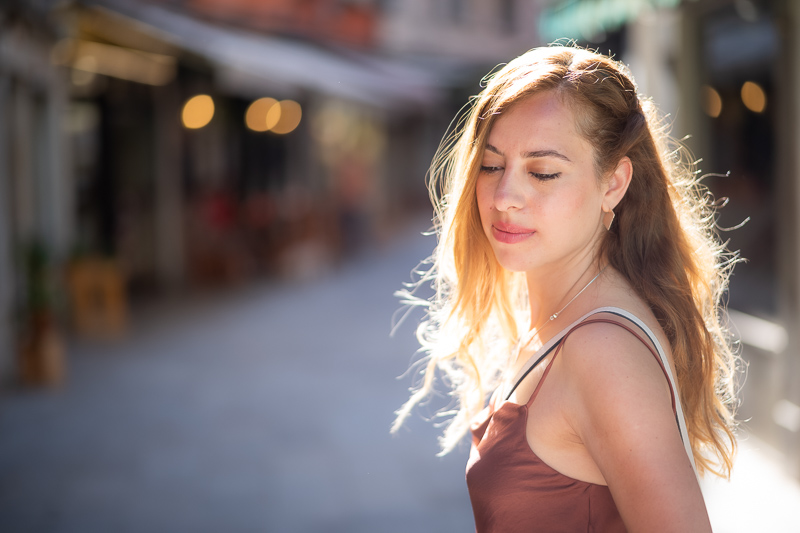
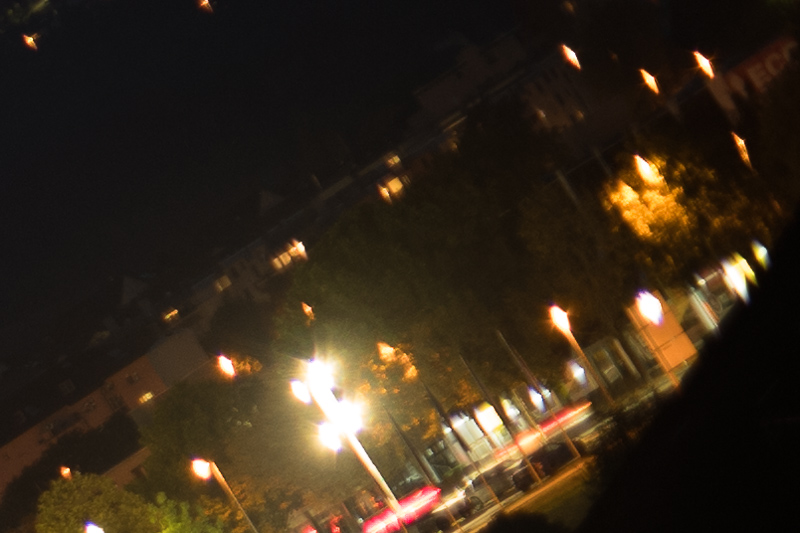
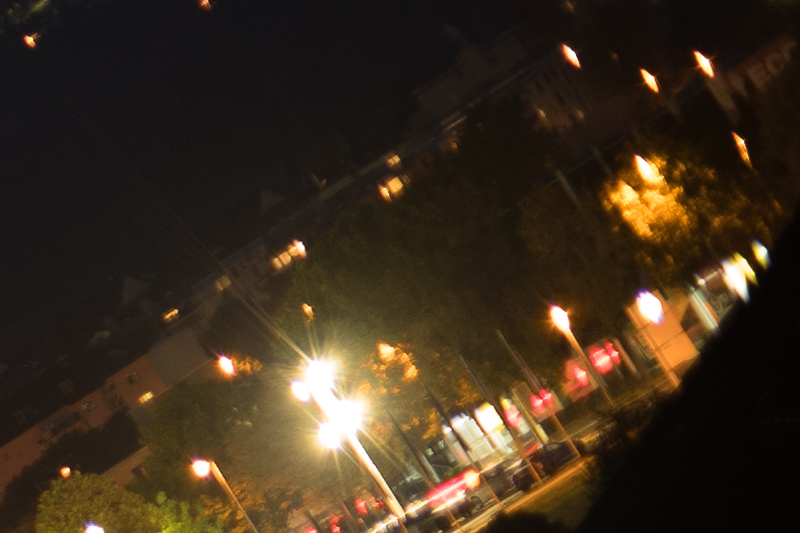
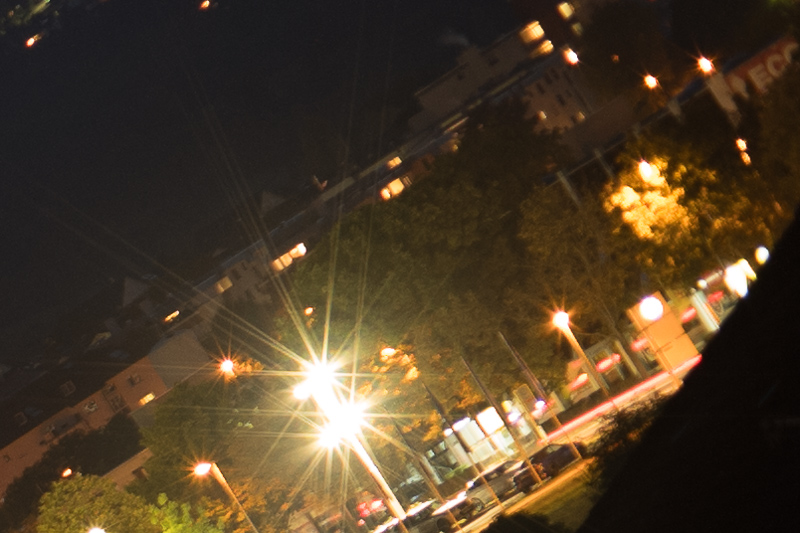
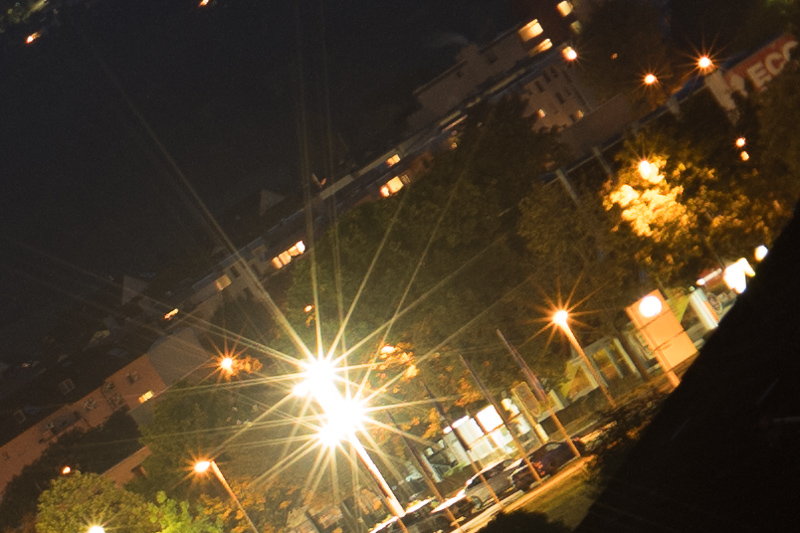
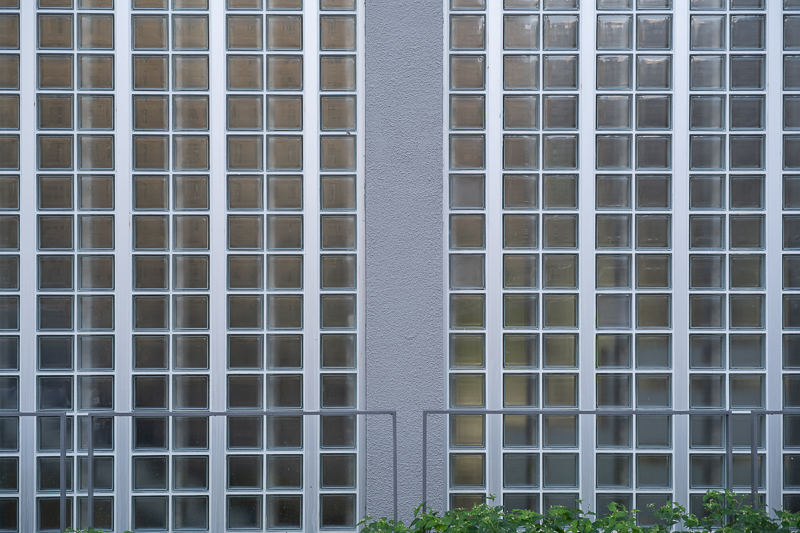
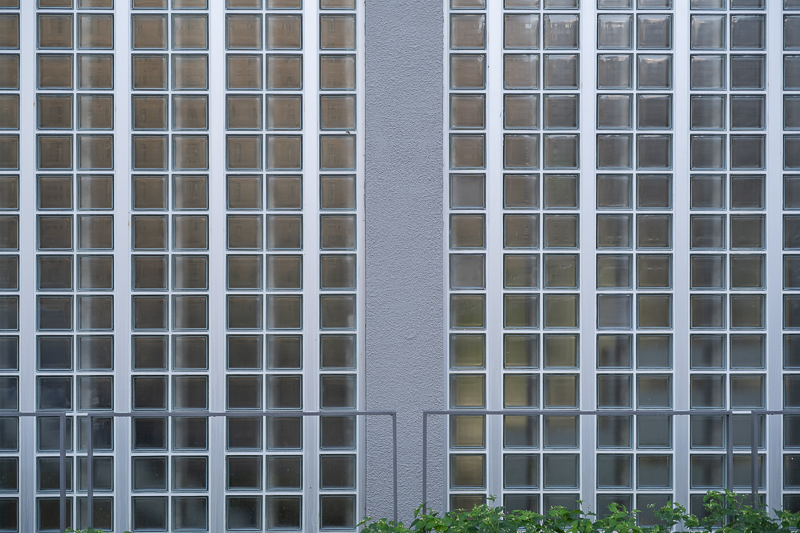
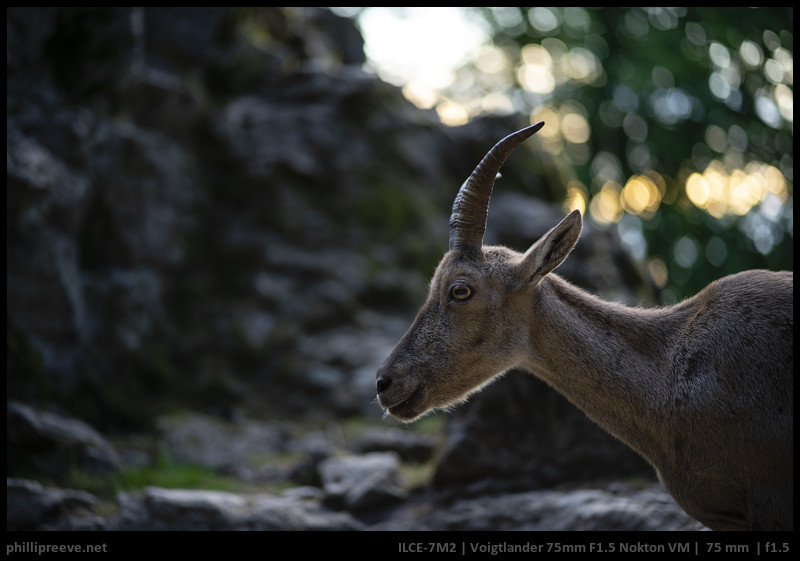





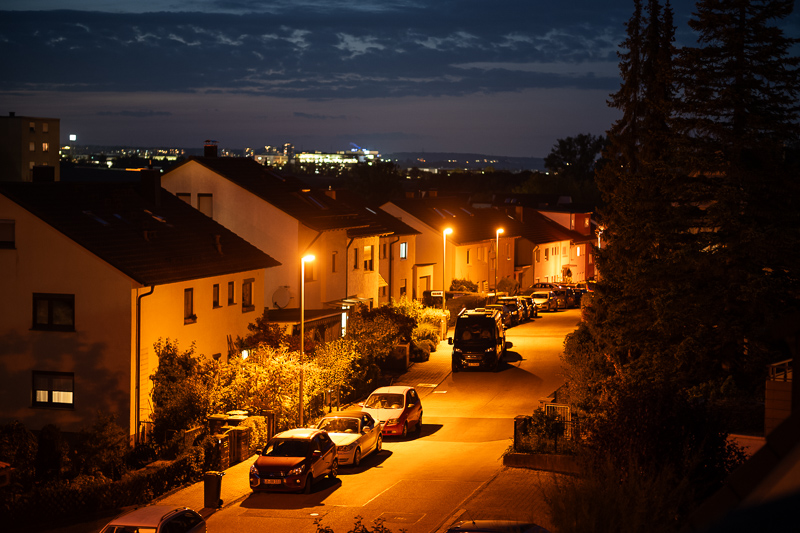
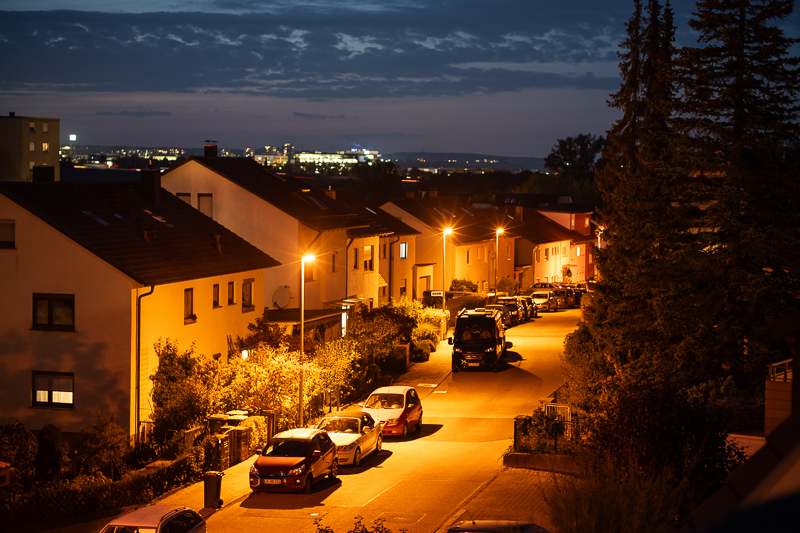
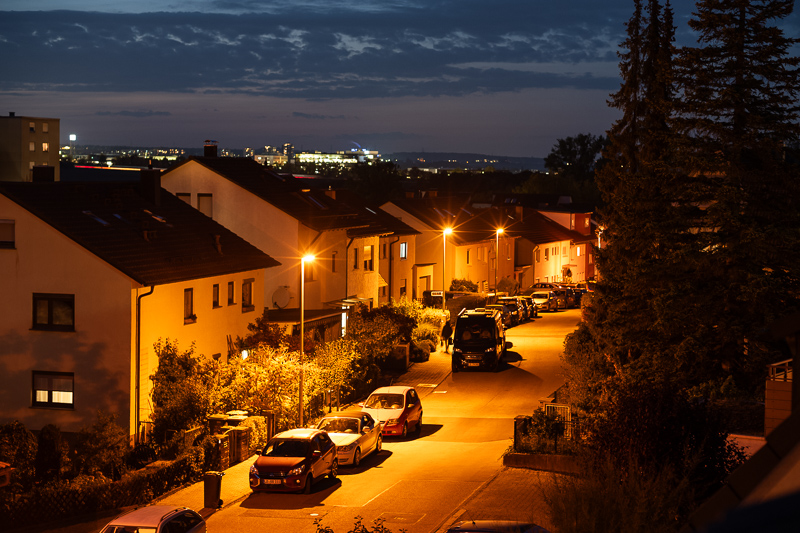
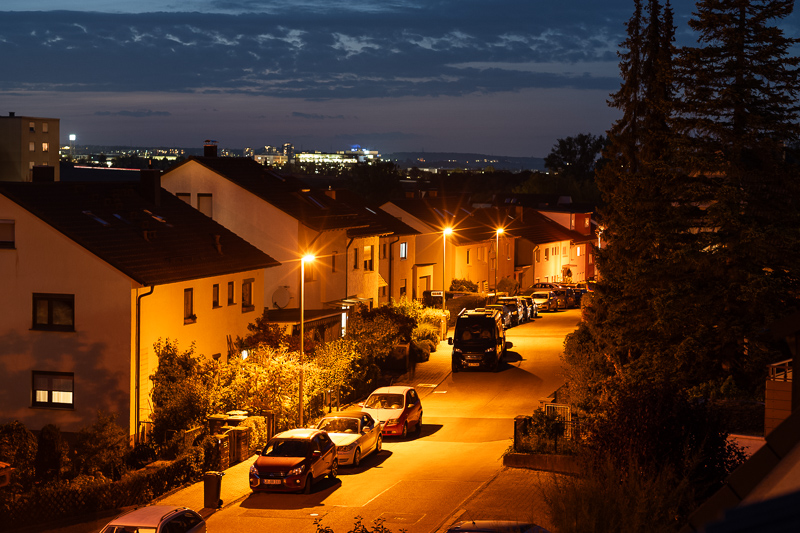
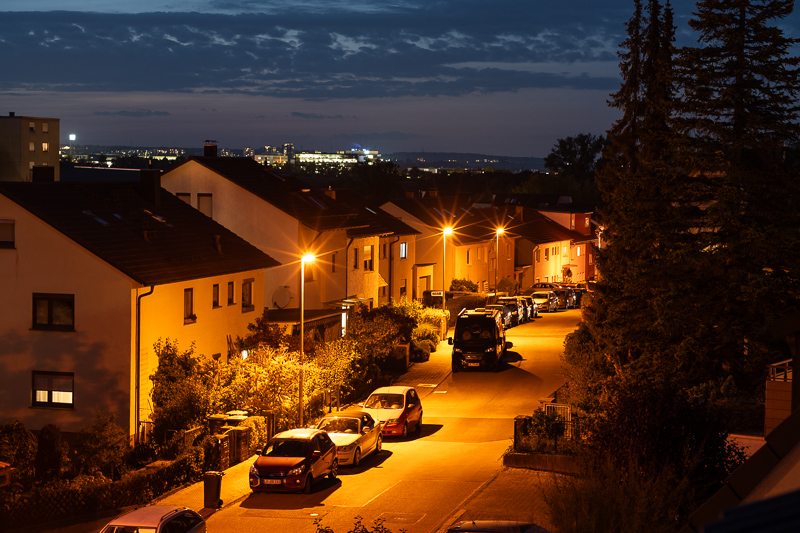
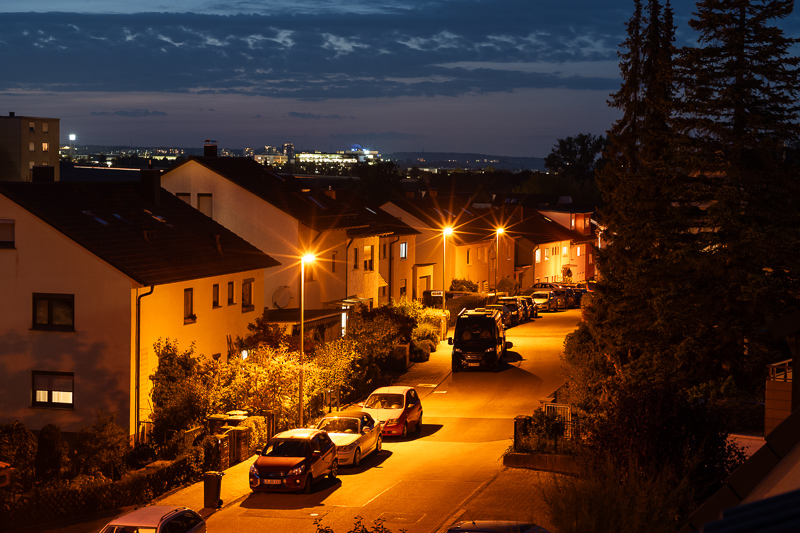
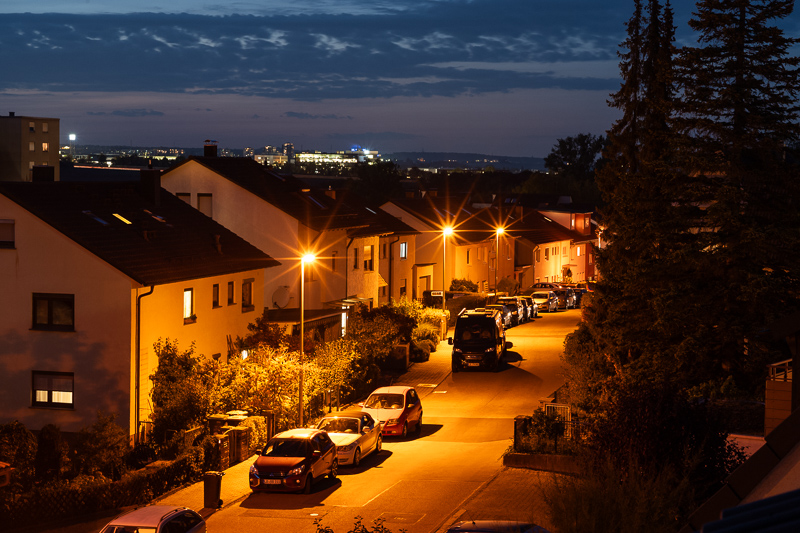
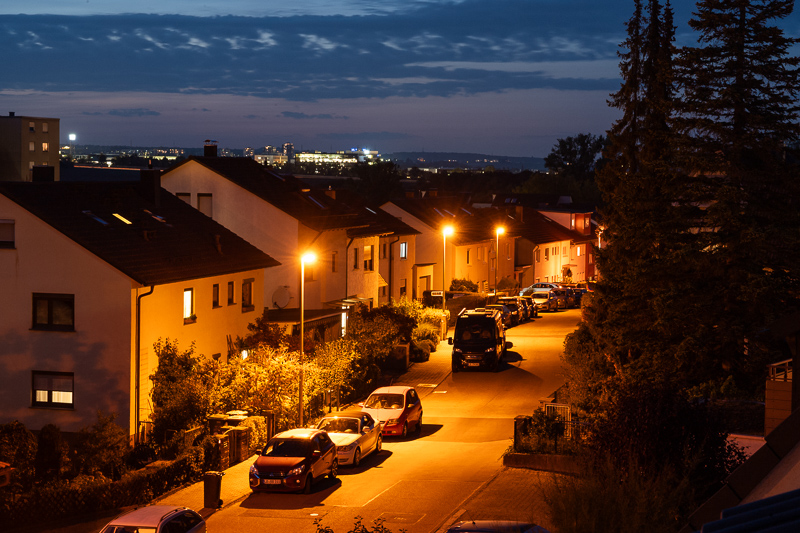

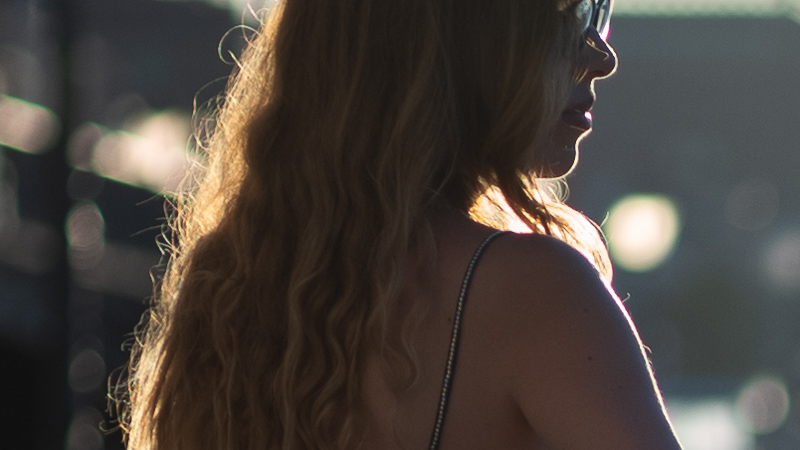
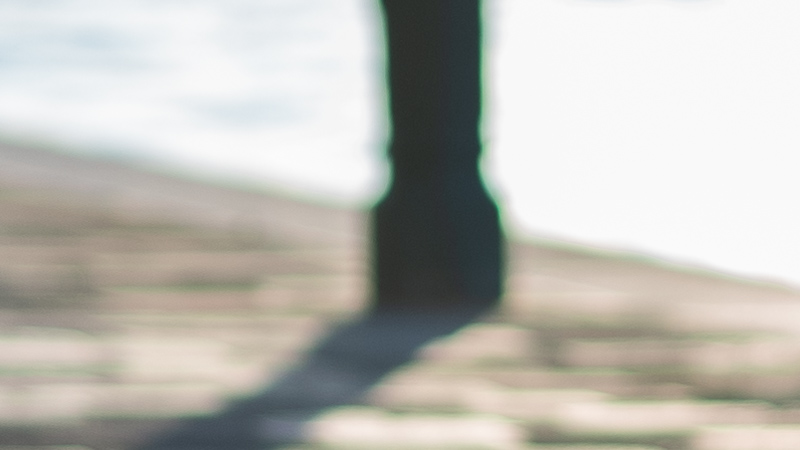
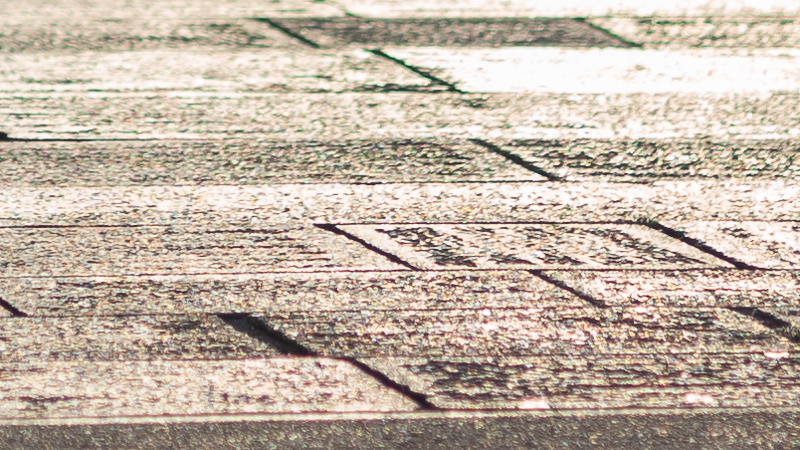
It seems this lens gives good micro contrast.
Please define microcontrast.
If you don’t know it’s easy to find out . Many people who ask this question do so as a jist . It’s done to “say” microcontrast is not a real thing.
Micro Contrast is the inner tonal detail of an image taken with a lens. Or observed through an optical device.
It is all the shades of color or grays within a photograph or film/video.
To ignore this detail is to ignore depth of detail and roundness of shape created by light and dark . Objects have shape . Perception of depth of these actual shapes are perceived through graduations of light falloff . So shading fades either with soft gradients of hard lines and everything in between. If a lens is incapable of of rendering these shades it has no micro contrast, inner tonal details , depth of shading , ect ect . However you’d like it worded. Some lens designs lend to great capture of this detail in a scene others don’t .
Nice technical description of micro contrast.
I can’t explain it as well as you can, however, I believe that most experienced photographers (like most of us) know it when we see it, and can recognize good mc from bad mc.
you got some typo`s in the text – versions and build quality…
nice sample images… good thing it doesn`t come in e-mount, could be tempting… 🙂
Cheers, A.
it seems to me the native CV 65mm f2 Macro is a much more versatile lens at only 100g more.
Unless you shoot M-Mount too…
Somehow I still had the specs from the CV 1.4/21. Actually it is 350 which is very light.
i was already wondering… considering the size difference.
It is much more than just 100g more, if I do remember correctly the 65mm f2 macro is 635g – so almost double the weight!?
My initial specs said 540g because I used the cv21 review as a template and it didn‘t save my update.
e-mount:
65mm/f2.0 Apolanthar: 625g
75mm/f1.5: 514g
100g more, yes.
Double the weight: no.
If you are using the M Mount version it is almost double the weight.
The E mount version is unnecessarily fat.
Pembrokeshire (the landscape)?
exactly.
I was wondering about the weight!
Also, I imagine that the focus ring rotation is 100° and not 10° as published.
fixed, thanks. Still traveling so I was a bit too quick to hit the publish button.
Phillip:
For the test shots, -how much post processing is there? Are you shooting RAW and converting to jpeg in LR. I notice huge vignetting in your doggy shots. Is the point to show images that are as close to SOOC as possible?
Sharpness tests are default settings, the rest processed to taste. Vignetting is al little of 2 stops wide open which isn’t little but not excessive either. In the dog shots the background makes it appear much stronger than it is but that is just shadows.
Phillip, where are you? looks very beautifull!
Many thanks for this review; I have been waiting to hear about this new and very tempting lens from CV.
I hope you can test it with more recent a7R cameras, and perhaps compare results with the a7II camera, in order to get an impression of the difference in sharpness.
Thanks again,
C. Rodriguez
Results will be the same since filter stack thickness does not vary and I just have the a7II anyway.
Sean Reid claims the a7r line has better sharpness with M lenses as the lack of an AA filter on the a7r line aids the resolving ability of M lenses. The AA filter also increases the thickness of the filter stack.
Does he support that with any tests?
Yes quite a few actually. He tests the 28 Skopar and 28/2.8 across the a7r line, a7s line, SL and M line.
Are you familiar with his work? You may enjoy reading his essays. He’s not only been a lens tester for major manufacturers, but also an accomplished photographer in his own right. Thus his real work examples and method of optical evaluation expands on the typical testing of CA, bokeh, build quality, luminance vignetting, and sharpness.
All these articles are behind the paywall I guess so you can’t link to them? I am asking because it goes against any evidence I have seen so far. He covers systems I am not really interested in so I don’t see myself paying for it.
Sean Reid is quite right. It is not surprising that files from a 36MP camera with no AA filter look sharper than those from a 24MP camera with AA filter, with good enough lenses of course.
nice little lens. Comparing to the Loxia 85 weight I can think of changing. Love Loxia for landscape and macro photography with extension tubes. Would Voigländer match my requirements? Use my photo gadgets in humid environments, with different experiences what “leaky lenses” can handle. Larger glass surfaces cause greater problems in temperature.
At typical landscape settings results should be close to the Loxia with a little nicer sunstar and a little weaker corners.
For closeup photography I would expect better results from the Loxia but I haven’t tested the CV there yet.
I would expect better sealing from the Loxia but I am not really sure what you mean by leaky lenses.
Ha, Interesting! If we get an E-mount version it could be a very attractive replacement for the 2.4/85 Loxia. Especially for Landscape, which is what I’d use the Loxia for anyway – fingers crossed!
i agree: It is significantly smaller, close enough in landscape performance and more versatile as a portrait lens but of course a little short for many kits.
Interesting how close the optical formula of this lens is to the CV 50/1.5 – one more element and everything elses is practically identical. No wonder it seems to behave is rather similar fashion (on Sony with the 2mm+ optical stack).
Thanks for the review. Curious as to why the lens was not tested on a digital M camera such as the M10 or M240. These are the cameras the lens was designed to be used on, not a thick filter stack Sony A7.
Because I don‘t own one and hoped that there were no issues with it on a Sony.
Philip: regarding Sean Reids site, he does have some free essays outside of pay wall but they cover generally photography theory.
I’d bet if you email him, he’d send over some pics to show you the comparison between the 7r and 7s lines with RF lenses. Especially as you also serve the photo community as a photography writer/reporter. Check him out. I’m a long tome reader of his site, as I am of yours. Cheers!
To be honest that would be quite a bit of hassle to get results for a two rather old cameras of which I have little idea how reliable they are. I read conflicting reports about his reviews and he has ne free ones I could read to get a feel for them.
Looks nice.
Any chances you guys will get 7artisans 75/1.25 for review soon?
Should be on the way to Germany and Bastian will have a look at it first.
Great review, good job!
Thanks 🙂
I doubt the results on a Leica M will be much better at the extreme corners. Note that the linked FM post only tests the edge of the frame, not the corner.
This lens is proposed as a modern version of the Summilux 75 at less than one third of the price. For that purpose, extreme sharpness wide open is not a priority.
Hi Philip! Thanks for the great review. I really would buy the lense if there is a fe version, I personally need the magnifier to focus. Do you have any new information, or do you know who I might ask (I would love to share the info here)
I told Stephen from cameraquest to encourage Cosina to release it in E-mount but I have no information if that will actually happen.
A really helpful review. I was tempted by the look of this lens, currently shooting with a CV 75mm 2.5 on an A7II, which is light and very sharp. I think the loss of sharpness wide open you identify is not worth the trade-up. Many thanks.
I’m in the point of making final choice between available options. If you were to pick 75 mm now, which one would you choose, 1.5, 1.8, 2.5?
Thank you for this review.
Rendering seems wonderful to me.
Please add a few portrait shots, because this is the main use of this lens. Skin tone and micro-contrast are highly important.
I laud your efforts once again for an excellent, incisive review.
IMHO, all indicators point to this great product from Voigtlander as the best in its focal length.
By ALL, I mean weight, size, price point and IQ.
That said, this will be my next investment!
Appreciate your help, Phil!
BTW: It would be interesting to mount this on an APS-C body where it will have a FOV of 90mm via VM-E close focus adapter
75*1.5 = 112.5 😉
Thank you 😊 I like a lot this lens on my M240 and SL2
Hi Phillip & Bastian,
For the use of this lens on a Sony body, will a VM-E close focusing adapter improve the close focusing ability of this lens?
Great images by the way, especially the portrait and the landscape shots 🙂 Its a pity that CV does not seem to release the lens in E-mount.
You will be able to focus closer with a close focusing adapter, but you have to stop down to ~ f/2.8 to get a somewhat decent performance, maybe further.
Ahhh, I see. Thanks Bastian!
Hello Phillip,
I am considering purchasing a couple of Voigtlander lenses for video usage. I have read several of your great reviews, and there are 2 things that remain unclear to me, but most likely you know the answers :
1) I am in a dilemna between purchasing the Sony E versus VM versions of the lenses. It appears to me the color rendering is significantly superior on some of the VM lenses. But on the Sonys, the aperture ring is declicable when being pulled upward or backward. Do the VM Noktons also feature such a declicking solution ?
2) Do the Voigtlander lenses show focus breathing ? Is it important ? And if so, is it less important on the Sony lenses which tend to be newer ? Or do they feature the same amount ?
Many thanks for your lights, they would be very helpful to me.
Best regards,
Alban
The E and VM Voigtlander lenses do not differ in color.
The VM versions do not come with a declick feature.
Some VM lenses (like the 75mm) are not available as E lenses.
Most of the Voigtländer lenses are block focus without floating elements,
so they show less focus breathing than many modern AF lenses but there are of course exceptions.
Hi Bastian,
Thank you for your feedback, it is very appreciated. About the color, actually there are differences. Check out this review from Steve Huff : https://www.youtube.com/watch?v=KC8lHcnVBmg
When looking at stills on Flickr, I also noticed I mostly liked better the pictures taken on VM lenses, but maybe this could be due to the color science of the camera behind or the editing of the photographer.
I don’t watch videos from people that try to scam people into buying expensive junk by making them believe that they will be able to talk to their dead ancestors if they do.
I fully agree with you Bastian. Steve Huff and “the Angry Photographer” are both people who we cannot trust, as they have taken a path toward pseudoscience and metaphysical bullshit. As an Engineer and physics enthusiast myself, I see too much of these people pushing their false ideas on the public.
Wow – Thank you Bastian! Steve Huff’s credibility just took a serious hit!!
No really, I don’t think we will ever see an E-mount version of any of these 3 lenses.
Unfortunately.
Here is an idea for an article I would appreciate: Do a comparison on the focusing between the Leica M10 and a Sony A7 series body on manual focus lenses. How easy it is to work with in different scenarios, how many steps (button presses etc) is needed to get critical focus? And how good is the end result precision with different approaches? On the Leica please also in such case show the difference with the optical and electronic viewfinders. Thanks and best regards from Sweden!
I have stopped using the rangefinder on the M10 at wider apertures.
It is simply not accurate enough for fast lenses.
The EVF is significantly worse compared to any A7 series EVF and ruins the only aspect the camera has going for it: its nice look.
I only use the rangefinder with lenses stopped down, otherwise I use live view (lenses not in the 28-75mm bracket and shooting at wider apertures).
For landscapes I also often use a polarizer, where the rangefinder is similarly useless.
Hi there,
thx at first for all your great articles! I´m a regular reader and appreciate your opinions a lot 🙂
I´m considering the CV 75/1.5 or a used Summarit 75/2.4 at the moment. The point for this is i don´t really need an aperture that fast and would be off focus too often with the shallow dof anyway. On the other hand the summarit is even more descrete not having that large front element and seems to be really sharp and contrasty.
Since one of you has the summarit, can you tell, if image quality is “better” on the more expensive summarit? I don´t like the soft and dreamy look too much, but my images to be crisp with a lot of 3d pop. Or does the CV 75/1.5 keep up with the summarit 75/2.4 at the same aperture?
Would be glad to hear your thougths 😉
Bastian has the cv but not the summarit.
I had the Leica, but don’t have the cv.
So we can’t directly compare. For what it’s worth I’d guess the cv is at least as good as Leica when both are at f2.4.
If compact really matters, and the wider apertures don’t matter to you, the summarit is a good choice. Otherwise I’d get the cv.
That helps quite a bit. Thanks. I already own some zeiss and voigtlander lenses and am happy with them stopped down just a little. Guess the CV 75/1.5 would do the trick for me too then. Since i´ve never owned a leica lens, i was just wondering if the summarit adds some special mojo over the voigtlander.
Hello,
thank you for that review. Have you tested whether this lens has noticeable coma, shooting wide open?
Thank you.
Best regards, Christian
I can have a look, but I expect rather mediocre performance here.
Hello Bastian,
thank you, this would be very helpful for me. I sure don`t expect miracles, but with one aspheric element there might be some hope for better than average coma performance.
Best regards, Christian
Very detailed review as always!
Only thing to improve:
– 0.7m distance (24mp Sony A7II):
Sony and Voigtländer crops switching position now and then makes it harder to get a quick comparison of the results.
Thank you for your Blog and the effort you and the team put into it!
I think you can’t really consider 1 meter distance and f/1.5 aperture as a “portrait setting” as dof is too shallow for human face. f/2.8 would be at least required for eyes and nose to be in focus (bank notes are more forgiving in that regard 😉 Therefore in my opinion the implied conclusion that the lens is not good that good for portraiture is a bit flawed.
I have strong doubts you even read the conlcusion.
True, I did not. I’ve drawn my conclusions from the test itself and your remarks.
These tests make one dependent on more lenses. So now I have compared CV75mm F1.5 with Loxia F2.4. Loxia is good at a lot but CVs are so much more fun to use.
https://www.flickr.com/photos/hans-nx/albums/72157719497846773/with/51292427380/
Hi Bastian,
I am looking for a compact reasonably fast lens in this focal length for my A7Rii. Thinking of this but it seems like rangefinder lenses don’t do as well on Sony. So, also considering the Pentax-FA 77mm f/1.8. Have you tried the Pentax?
Hi,
I have never used the 77mm and I am also not aware of any decent reviews on a full frame camera.
Thank you.
Any new updates from Cosina whether they will release an E-mount version of this lens?
On the same day they release one of 35mm 1.7 and 28mm 2.0.
What readers would like to know is: how does the voigtlander 75mm 1.5 M mount lens compare to the Leica equivalent.
That is the reason for me reading this review.
Is it as good as the Leica.
Michael.
Hi Philipp and Bastian and thank you for all those great reviews.
I’ve a CV 40 1.2 and really love it and I’m about to buy this lens and will use it on a Sony camera and I have one question regarding the adaptor needed.
Do you think it’s better to buy the close-focus VM adapter or the “standard” one?
Thank you again for the great work you do!
Julien
When using the 75mm 1.5 on my Sony cameras I usually use the TTArtisan 6-bit adapter.
It has a little wheel that you can set to 75mm and then the camera will recognize it as a 75mm lens and automatically adjust the focal length setting for IBIS.
If you want to focus closer with this lens I found a diopter to be the better option.
I am using a Leica Elpro 4 (you can get these starting at 50€ on ebay) with a 58->55mm Step Down ring.
Thank you Bastian for the quick and precise answer.
Do you think the discrepancy between the most contrast and most sharpness would cause problems with the LA-EA9?
No, but this is one of the lenses that will only focus properly in the center of the frame with LMEA9.
Oh I see. Some of my lenses struggle to focus outside the center but occasionally do. Some dont really work at all outside the center. Sometimes they focus but don’t always nail it. With this lens does it miss the focus slightly outside the center or does it fail to focus at all?
It really only works properly in the center.
Does anyone know what happened to the E mount version?
Regarding your comments on the Leica 75mm Noctilux:
You will be surprised how much less that lens vignettes compared to the 50mm Noctiluxes.
Regarding the question, how much sense this makes on the M-mount system:
Given the calibration is ok, this works pretty well with the optical rangfinder when you use the 1.25x or 1.4x viewfinder magnifier and since M 240 you have live view magnification or Visoflex. I agree, that the EVF available on the Sony helps even more, but actually there you have even better options with AF lenses like the Sigma 85 DG DN Art that outperforms even the 75 Noctilux in almost every aspect. If you compare the bokeh, you still will be tempted to use the Noctilux on the Sony if the situation allows it.
After I found out that there is a hidden correction to the M10 raw files when using the 35mm 1.4 FLE MK II even when all corrections and lens recognition are turned off, I doubt that there is less vignettign unless that has been tested on a different camera.
The optical vignetting (cat’s eyes) is clearly visible in Leica’s marketing material and the only modern lens where it is that strong I am aware of is the Nikon 105mm 1.4E.
I tested on the Sony. Vignetting is no issue but when you mean the cat’s eyes, you are right, see e.g. here: https://flickr.com/photos/hhackbarth/53414937211
A valid alternative is the Pentax 77 1.8 Limited
I owned the Voigtlander 75mm 1.5 M mount lens and used it with an M to Z adapter on my Nikon Z6 camera. https://www.flickr.com/photos/f2guru/53220224672/in/dateposted-public/
I recently sold my Voigtlander 75mm 1.5 because I didn’t care for its bokeh, and its cats eyes. I’m an expert in manual focus, and I’m not sure why, but I got a relatively low keeper percentage with the V 75/1.5.
The V 75/1.5 certainly has a great build, and the few keepers that I did get had a well above average 3d-like depth/pop to them.
But to my eye, I guess that I preferred the overall IQ of the following Zeiss Milvus lenses: 50/1.4, 85/1.4, 100/2, and 135/2.
A renderização de cores das lentes VL são difíceis de superar, principalmente e azul e verde e também tem o micro contraste como o colega salientou. Amo!
Hi Bastian!
Yesterday I had the opportunity to hold the E-mount version in my hands. It is significantly larger and heavier than the VM that I have. Not only is it a completely different housing, but it feels like there is more glass built in.
Do you think this is due to optimization for the Sony sensor, or is it a different lens design?
I am pretty sure they just changed the casing to look nicer on a Sony camera.
I would be greatly surprised, if there was more glass because it isn’t even the case for their flagship 50mm 1.0.
Maybe it’s better to skip the upgrade: less weight to carry in my luggage and more money left in my wallet! 😃